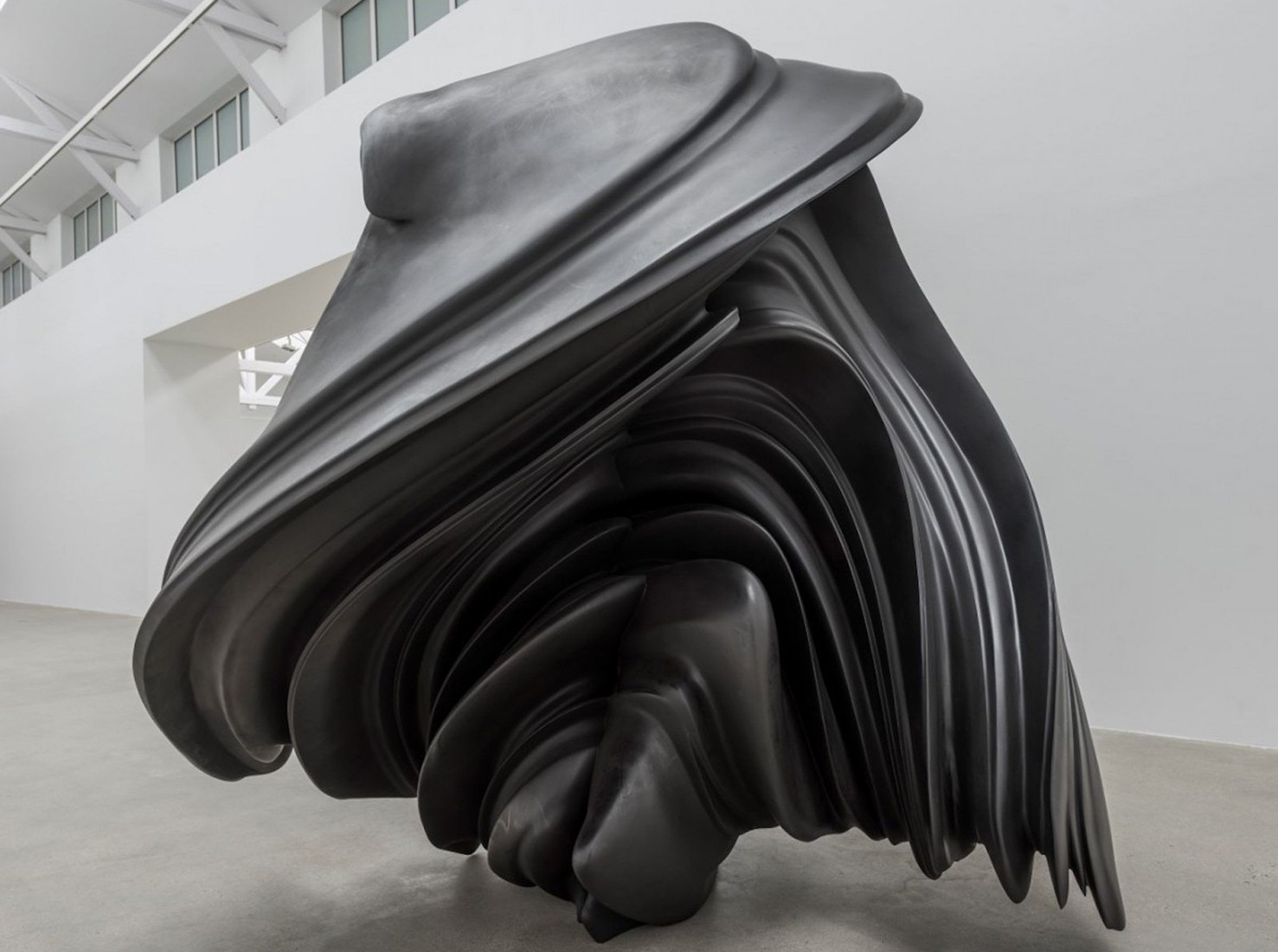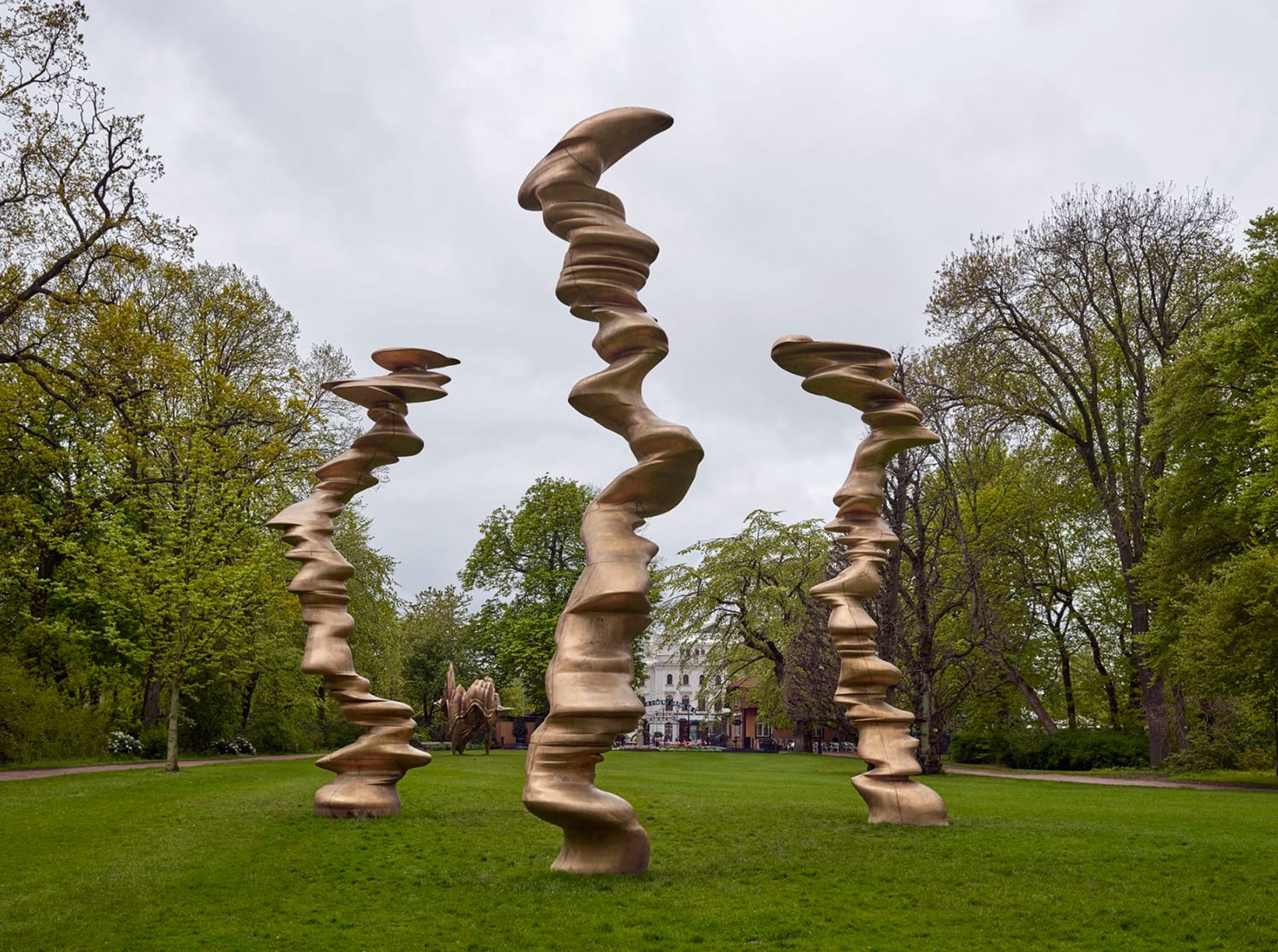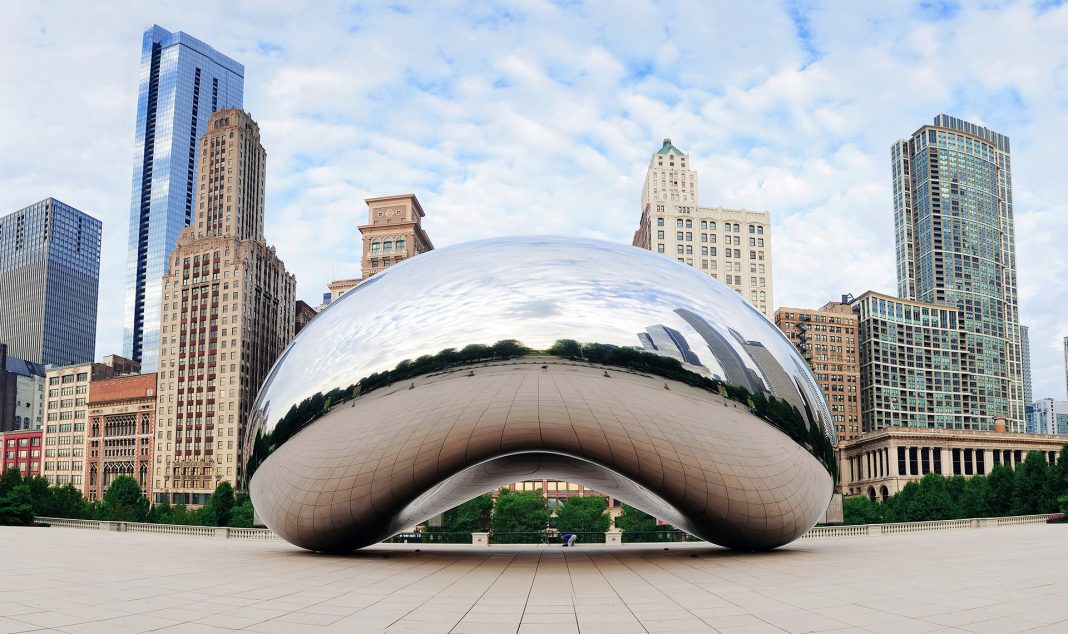The sculpture is changing the way we think about the environment. It appeals to the subconscious, to the senses, and to memory, surprising with a rich form or a strict idea. Inspiring or shocking.
1 Constantin Brancusi

As if molded from rough clay by a peasant’s hand, Brancusi’s objects became synonymous with the sculpture of the new XX century. And his “Bird in Space” changed U.S. law. A pupil who left Rodin, a recluse, the hero of the Parisian avant-garde Constantine Brancusi (1876-1957) is considered the founder of abstract sculpture. There was an endless search for form and minimalism. “What they call abstract is realism because it is not the appearance that is real, but the idea, the essence of things,” Brancusi said.
The son of the Romanian peasant Brancusi left home at the age of 12 and literally came on foot to Paris, where he lived and worked almost all his life. In 1926, at the American border, his sculpture “Bird in Space” was defined as “Kitchenware and hospital supplies”, requiring a tax of 40% of the value. After a long trial, the court had to admit that “Bird” is a true art that can be imported into the U.S. duty-free: “whether we like these new ideas and schools or not, we believe that the fact of their existence and their impact on the art world must be taken into account and recognized by the court.
Brancusi created several versions of the same story, combining them into groups. His most expensive sculpture to date is the bronze “Exquisite Girl (Portrait of Nancy Cunard)”, cast in 1932. At the auction on May 15, 2018, this work was bought for $71 million, taking into account the commission.
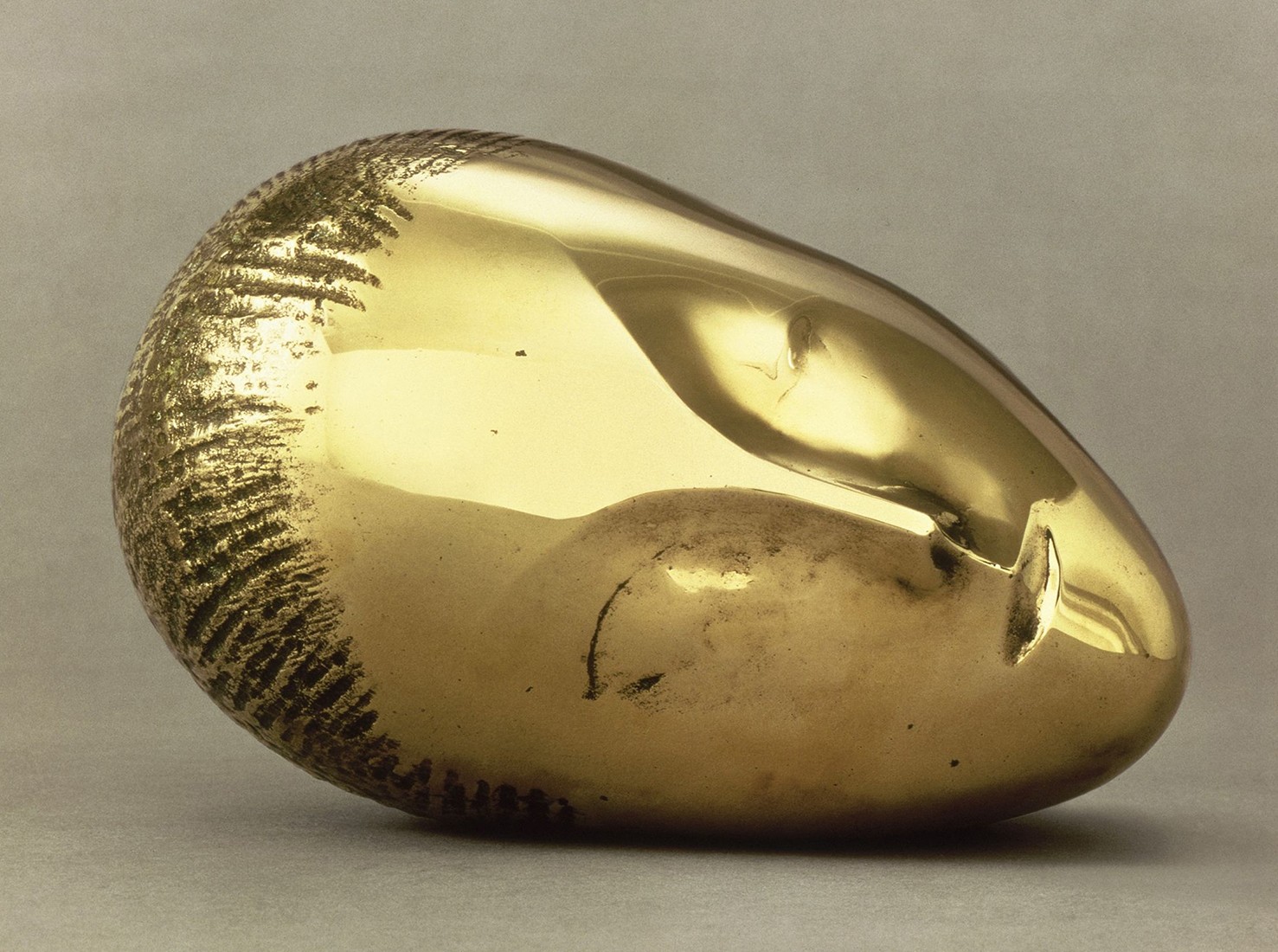
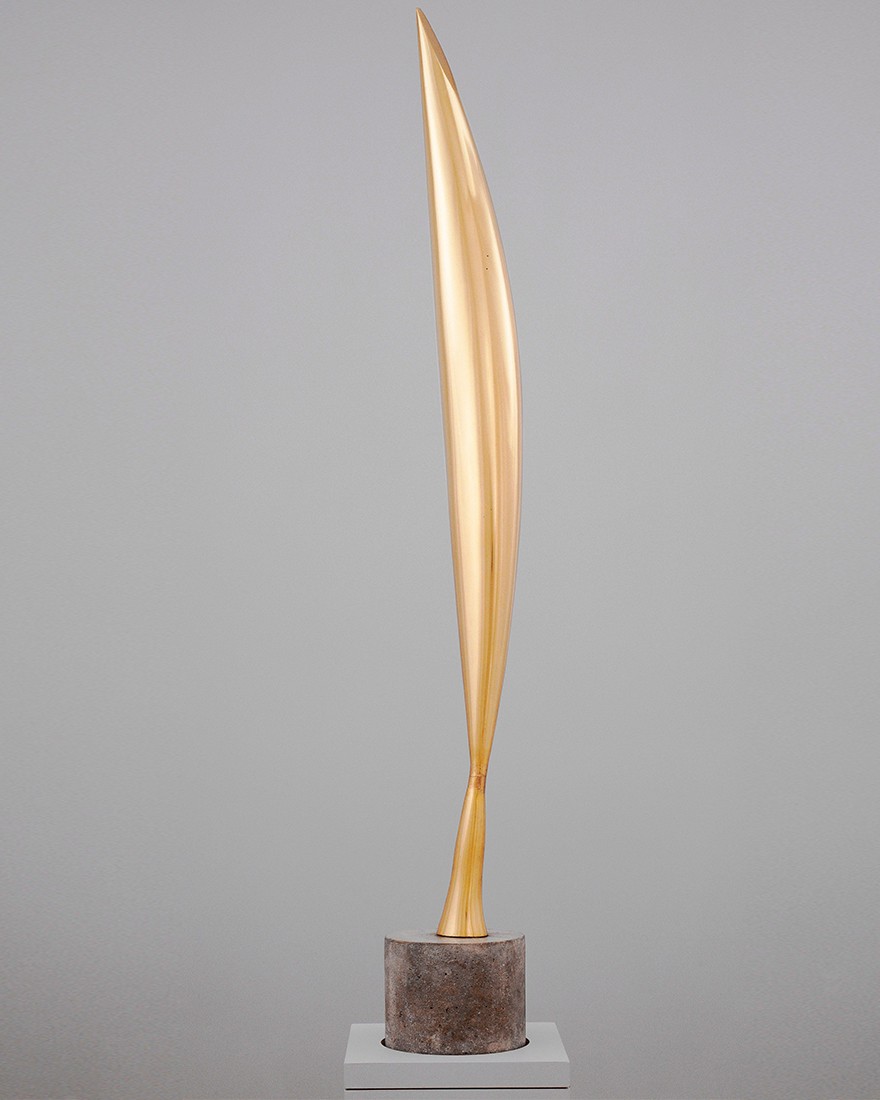
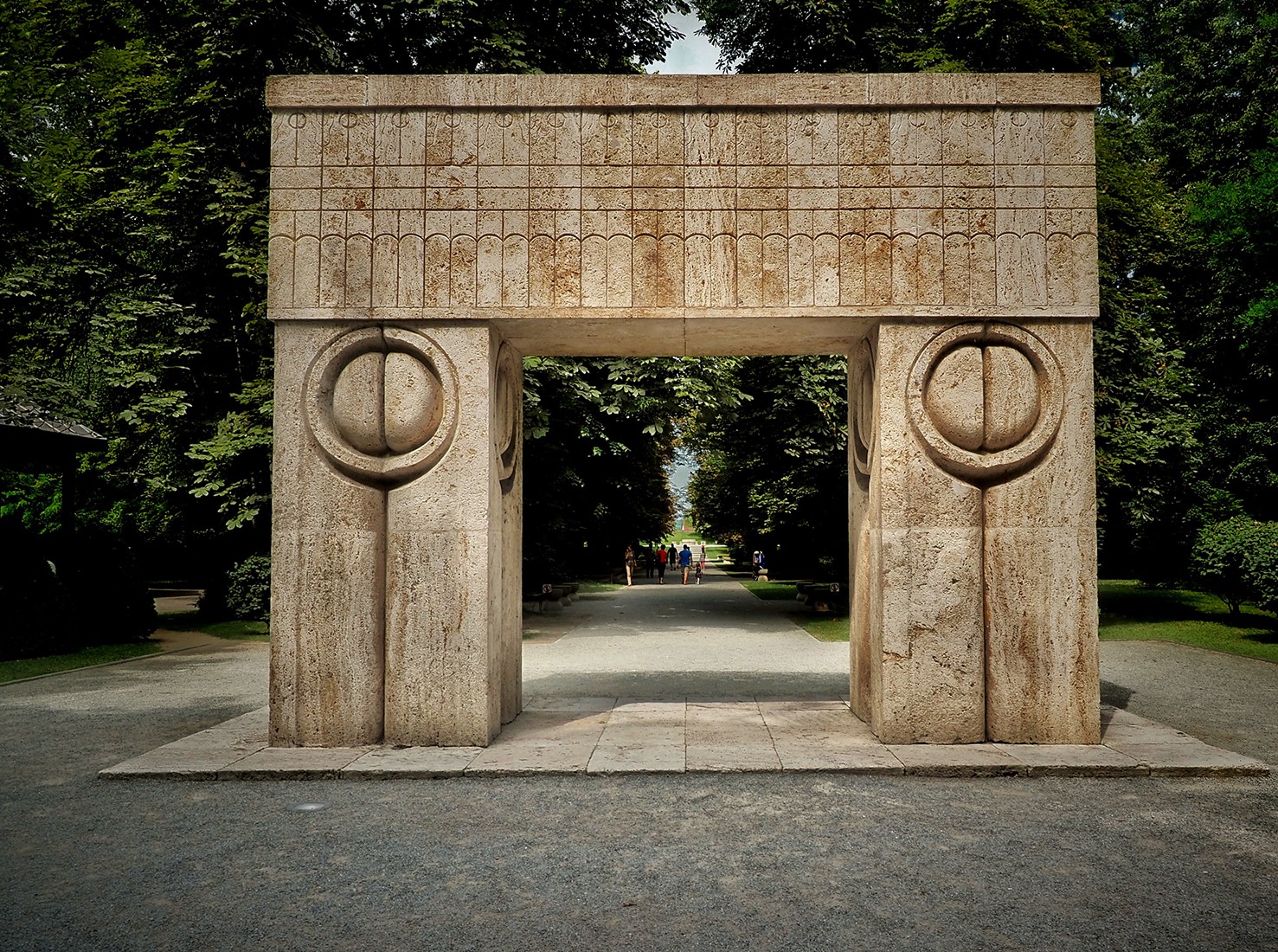
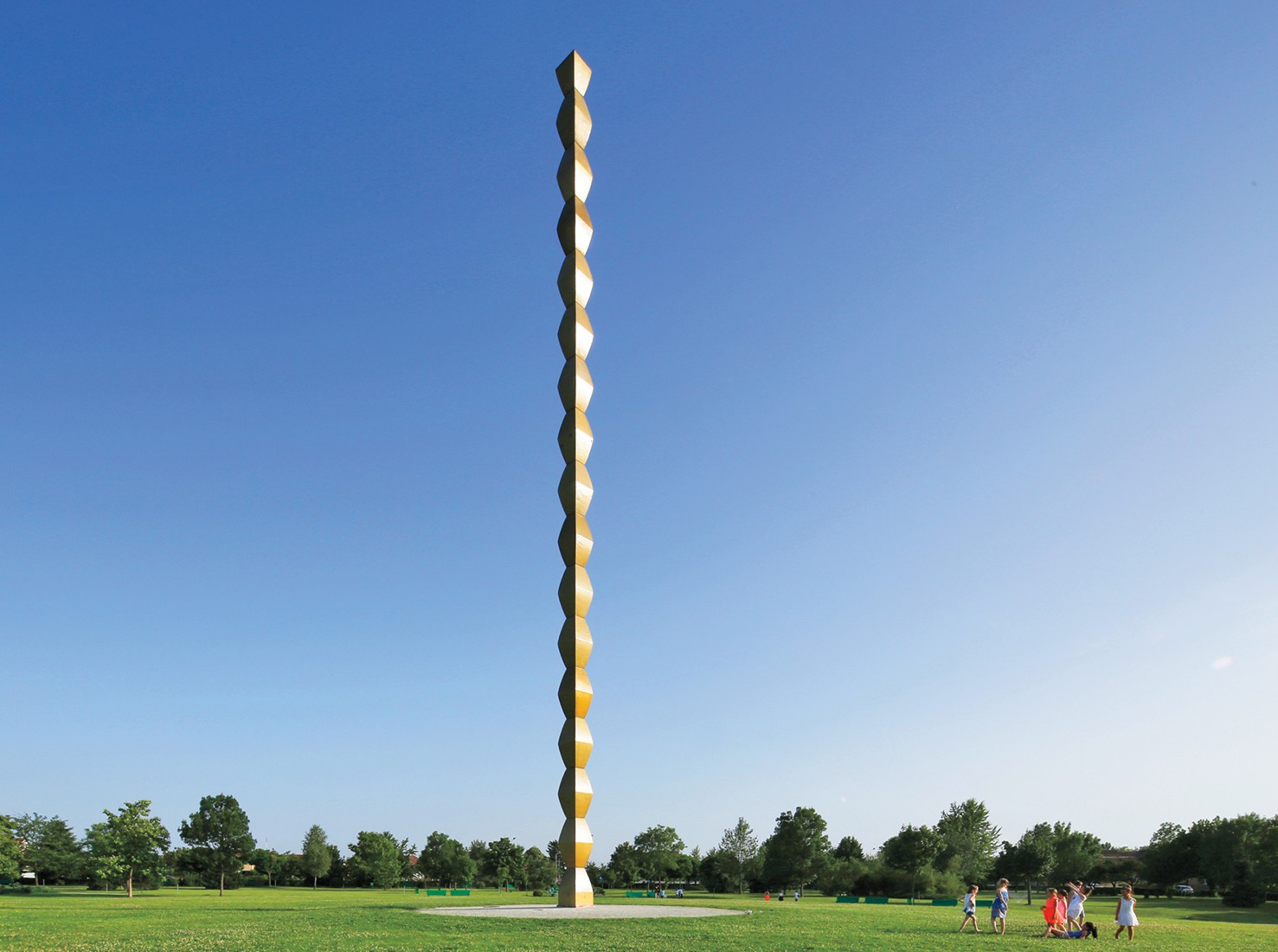
2 Alberto Giacometti
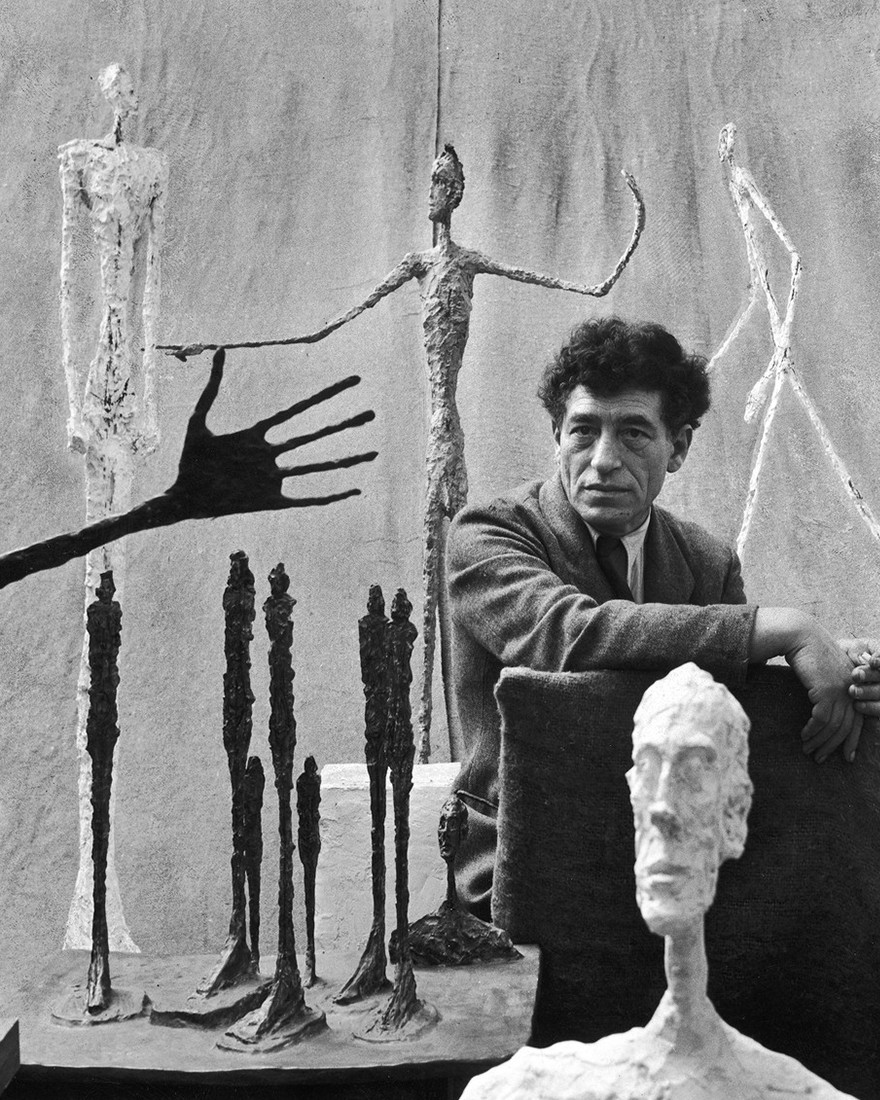
Alberto Giacometti (1901-1966) is the most commercially successful Swiss artist in history. Even the Swiss, who has not seen any of his sculptures, knows both the author and his “Walking Man”: they are depicted on a 100 franc banknote. And “Pointing Man” (1947) Giacometti, sold for $ 141 million in 2015, is recognized as the most expensive sculpture in the world.
“Creativity Giacometti makes our world even more unbearable for me: so this artist was able to abolish, it seems, all that prevented his view, and show what remains of the man when visibility disappears” – wrote Jean Jean Genet. He tried to depict something that does not lend itself to the image – invisible, intangible, only felt. Changed the proportions of the body, distorting, and bringing to the absurd idea of how it should be depicted. After Brancusi and Giacometti, no one would think to work in a traditional manner – the art world has firmly connected itself in the XX century with modernism.
A native of the country of bankers Giacometti was completely indifferent to money, to the “beautiful life”, and did not recognize his achievements. Forty years, until his death he rented in Paris 23 square meters. meters, where he worked, lived, hosted guests. He smoked two packs of cigarettes a day, didn’t care about clothes, and married not for love, but at his mother’s insistence on an old friend. The widow and heiress Annette Giacometti organized a fund that kept the most complete collection of his works (350 sculptures and 80 paintings), preserving the entire environment of the workshop, from cigarette butts to wall paintings …
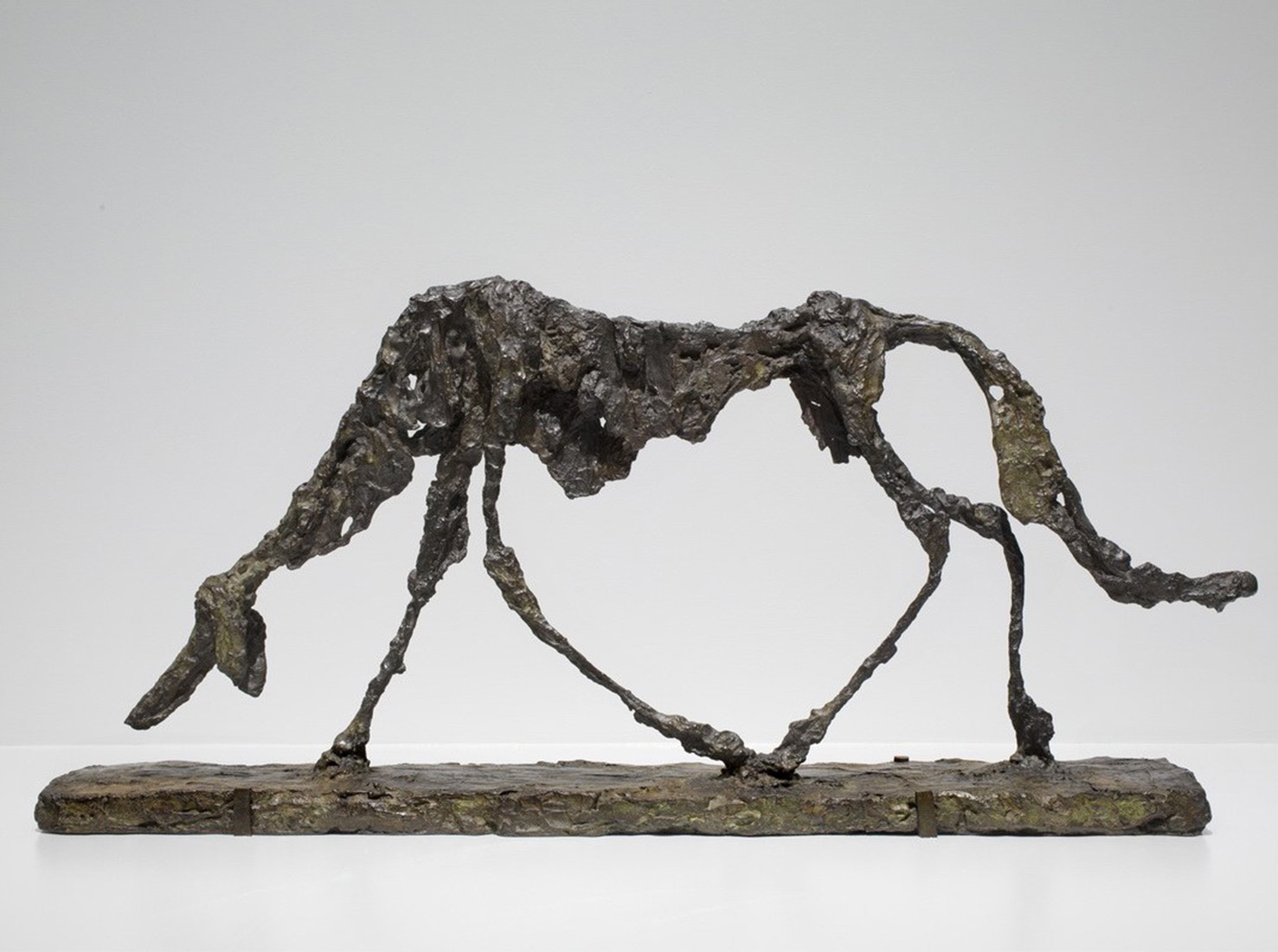
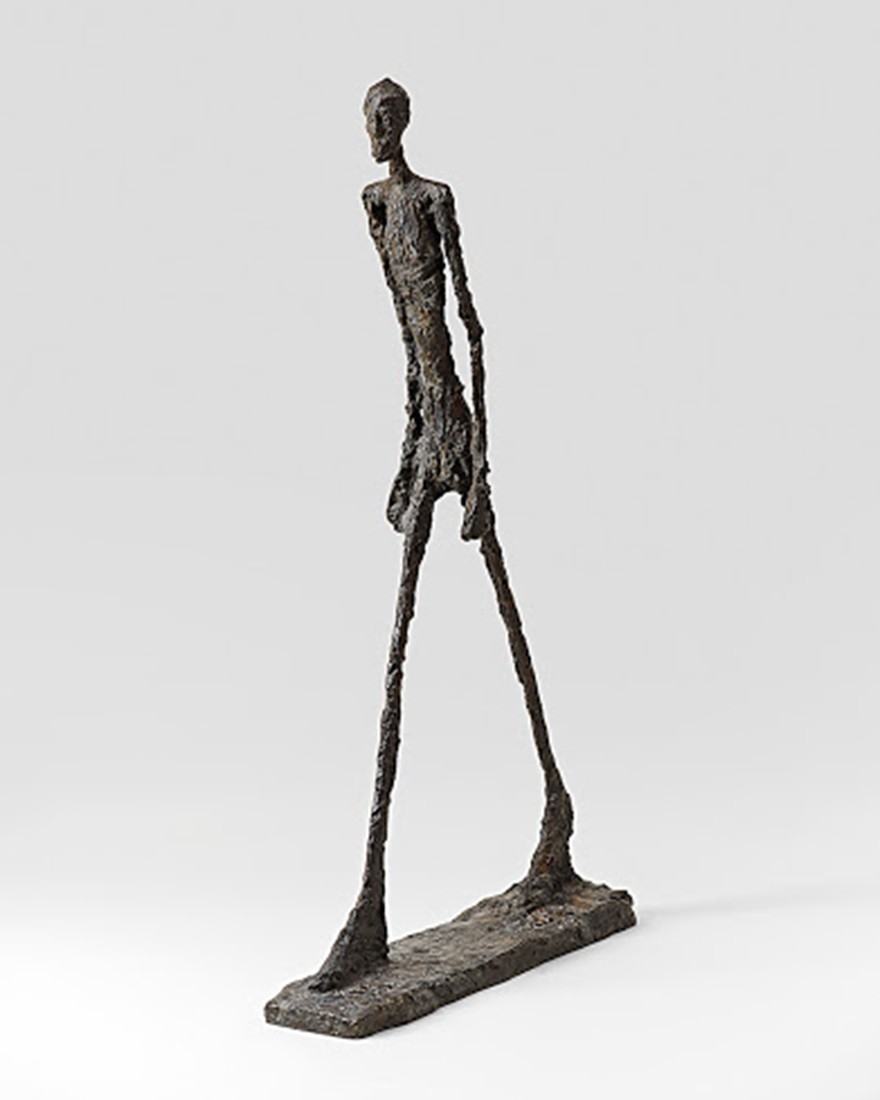
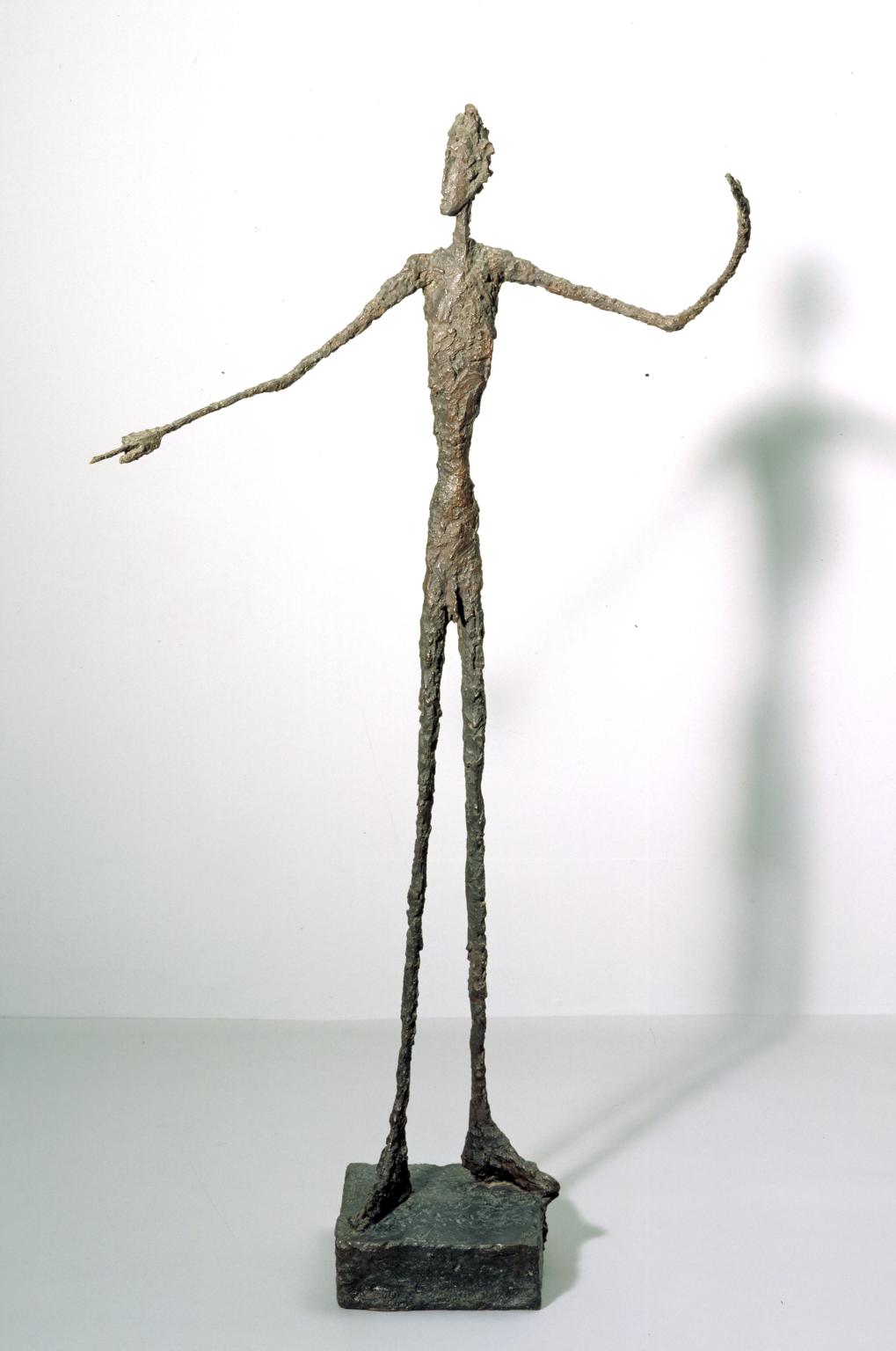
3 Henry Moore
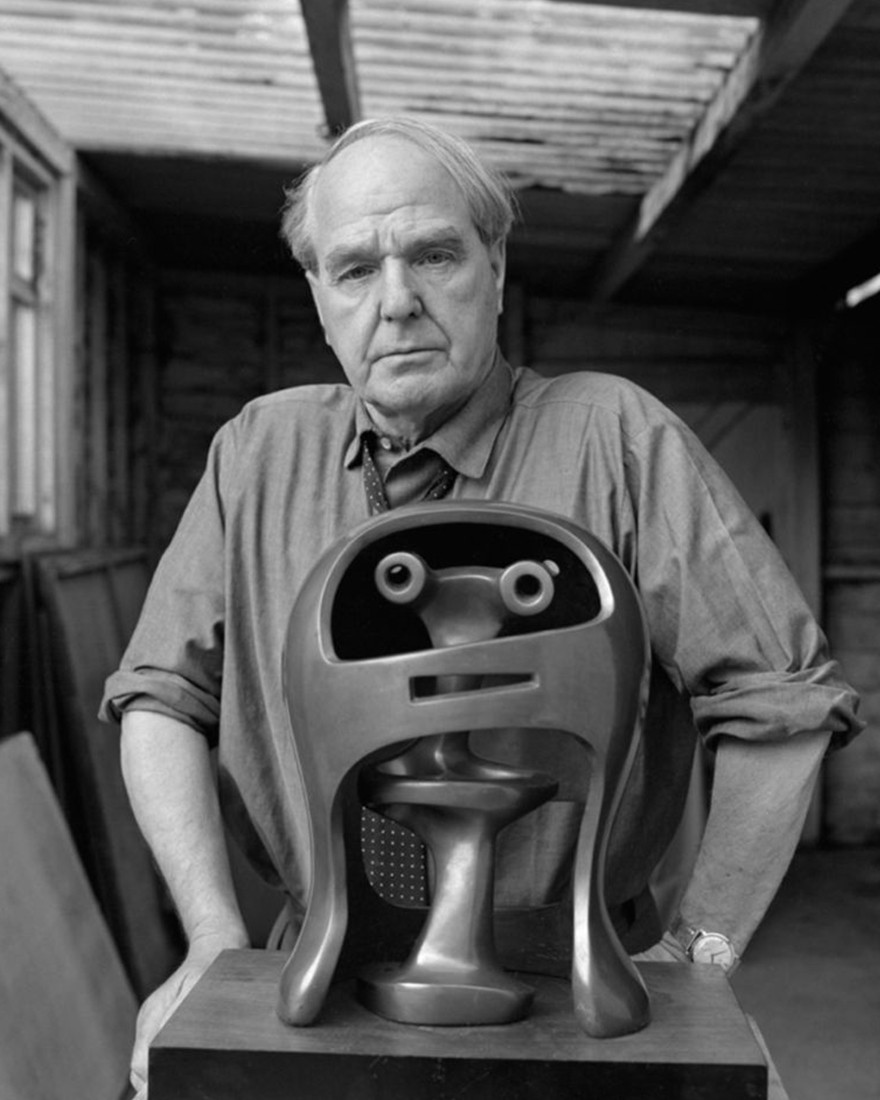
The son of an English miner, Henry Moore (1898-1986) lived a long creative life and received a brilliant education. In his life, there was mobilization, poisoning in a gas attack, heroism, romance, drama of a return from the war … He was scolded in London and worshipped in Paris, where he exhibited more often than at home. Moore’s personal exhibition at the Museum of Modern Art in New York has brought him fame as one of the best masters of the XX century. His sculptures stand at UNESCO headquarters in Paris, near the Lambert Bank in Brussels, the Lincoln Center in New York, the Martyrs’ Square in Luxembourg…
Moore was summarizing. He created his compositions of stone, bronze, reinforced concrete, terracotta, wood and lead, parts of which were fastened with strings or copper wire. He was equally interested in ancient art (Greeks, Etruscans, Mayans) and derivatives of the organic world (bones, shells, stones). He was fascinated by caves washed by underground streams and human embryos; hollows, gaping cavities, holes.
Moore and his wife Irina Radetskaya showed great interest in Russia. Mary’s daughters read Russian books, and the guests of their beautiful Perry-Green Estate were Mstislav Rostropovich and Evgeny Yevtushenko.
Moore was always attentive, he carefully followed the fate of all his works and knew the location of each. And in 1977 the sculptor founded his own foundation, which has been successfully operating to this day.
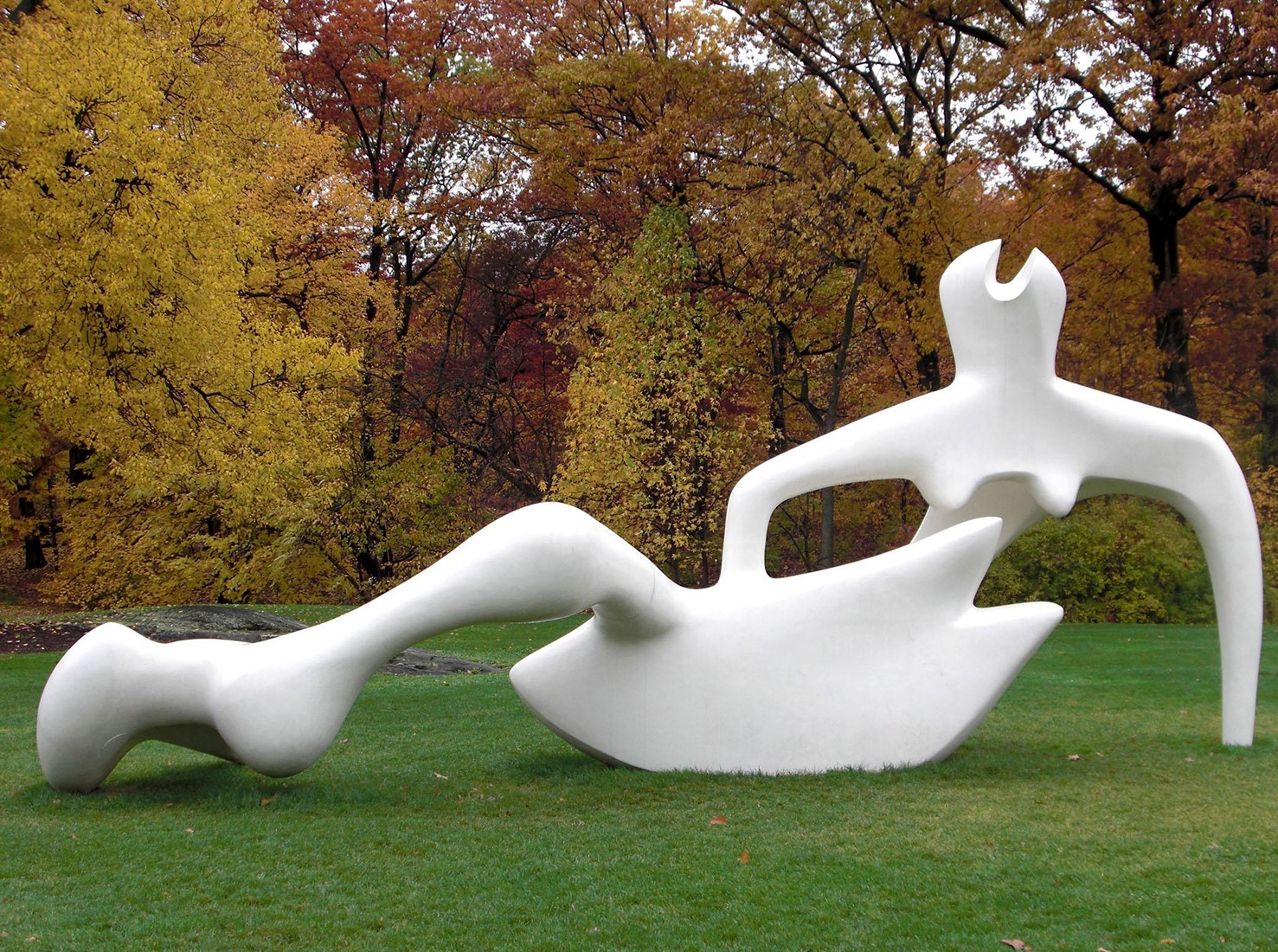
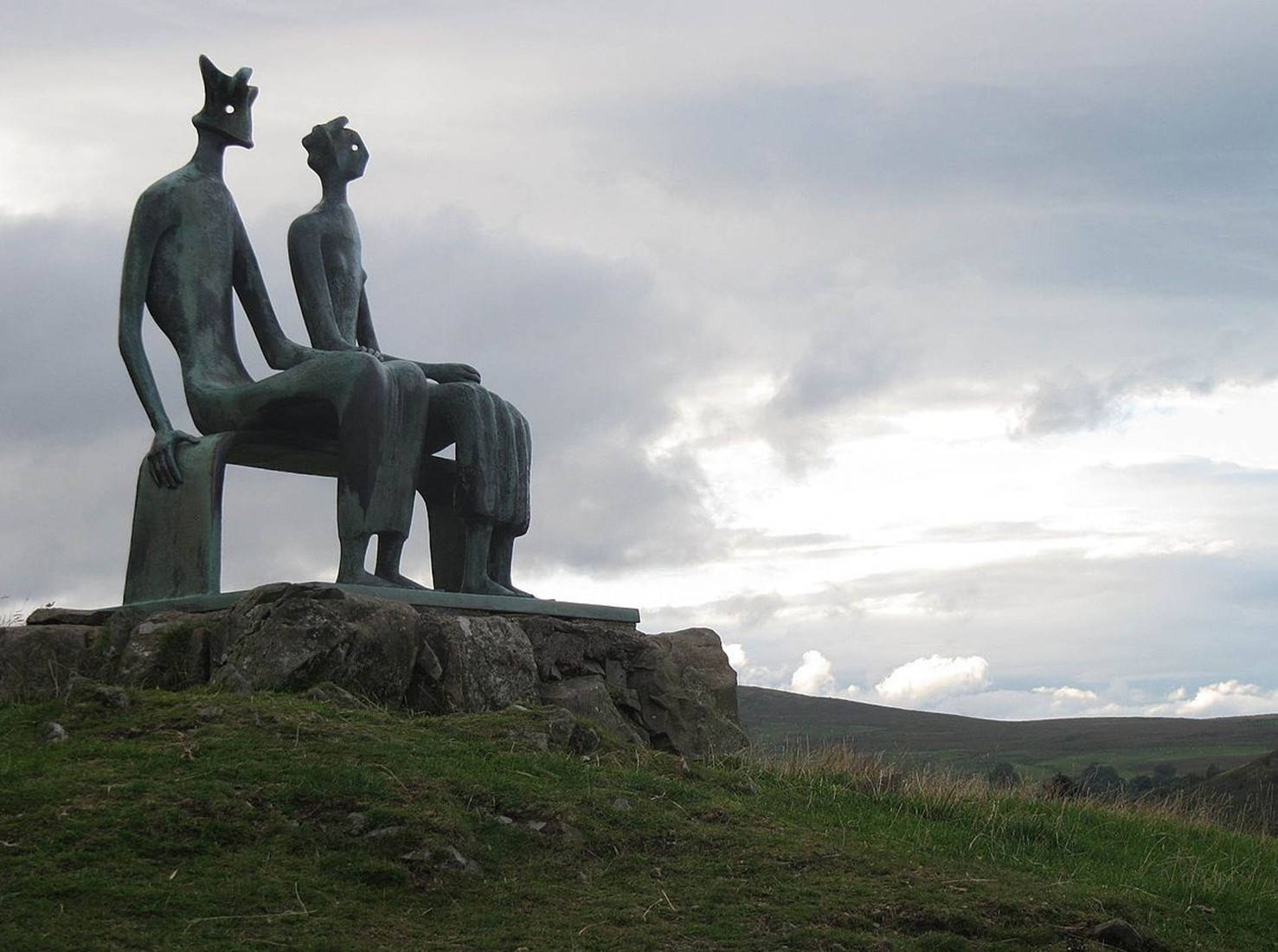
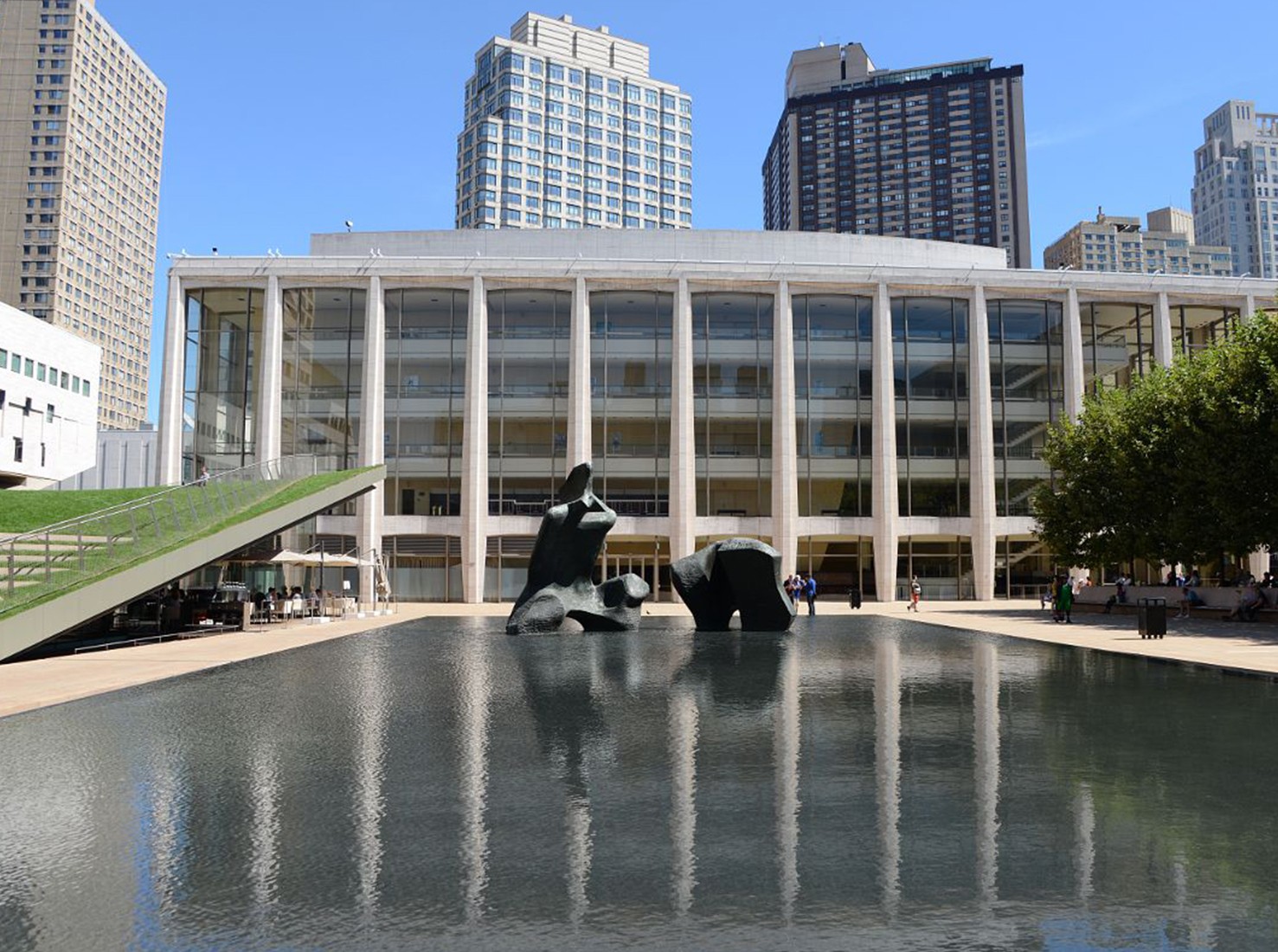
4 Sol LeWitt
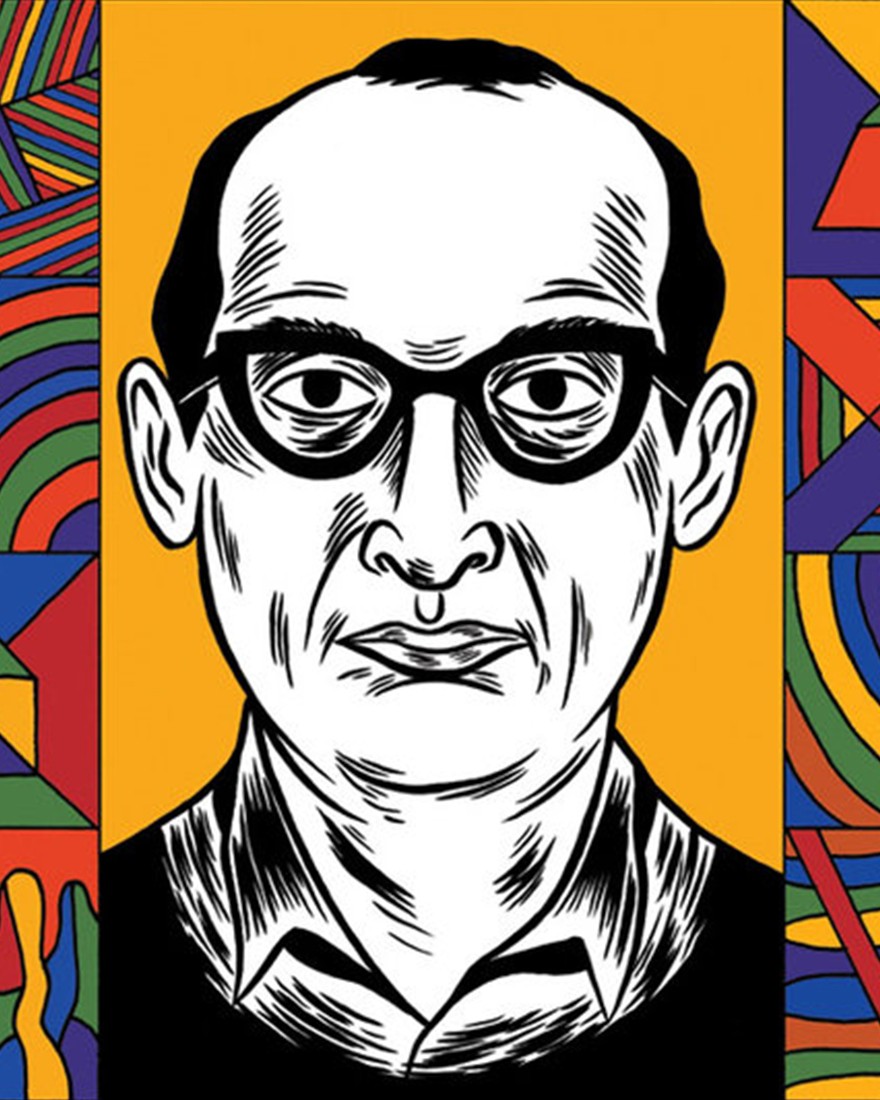
American artist Sol LeWitt (1928-2007) spoke about “economy” in art, reduced and destroyed the form: “The idea becomes a machine that makes art. An idea that is better expressed in two dimensions should not be expressed in three. Ideas can be expressed in numbers, photographs, words, and some other way – as the artist wishes because the form does not matter”.
Sol LeWitt was born in Connecticut to a family of Russian descendants. He fought in Korea, did graphic design, studied painting in New York, worked in the MOMA museum, and even worked as a designer in the workshop of architect Bay Yuimin (Pei). LeWitt became the author of manifestoes of the art of the 1960s: “Paragraphs about conceptual art” and “Tales about conceptual art,” in which he postulated the primacy of the idea. “The aim of an artist engaged in conceptual art is to make his work intellectually interesting for the viewer, without affecting his soul”.
We can say that as an artist, Sol LeWitt came out of Malevich’s “Black Square”. But he considered the cube to be the basic unit. He called his three-dimensional works “structures”, repeatedly rearranging and multiplying the universal module found. He did not think that an artist must make his own works, his field of activity – only ideas. Having thought over his work and written instructions for it, LeWitt easily entrusted its production to others.
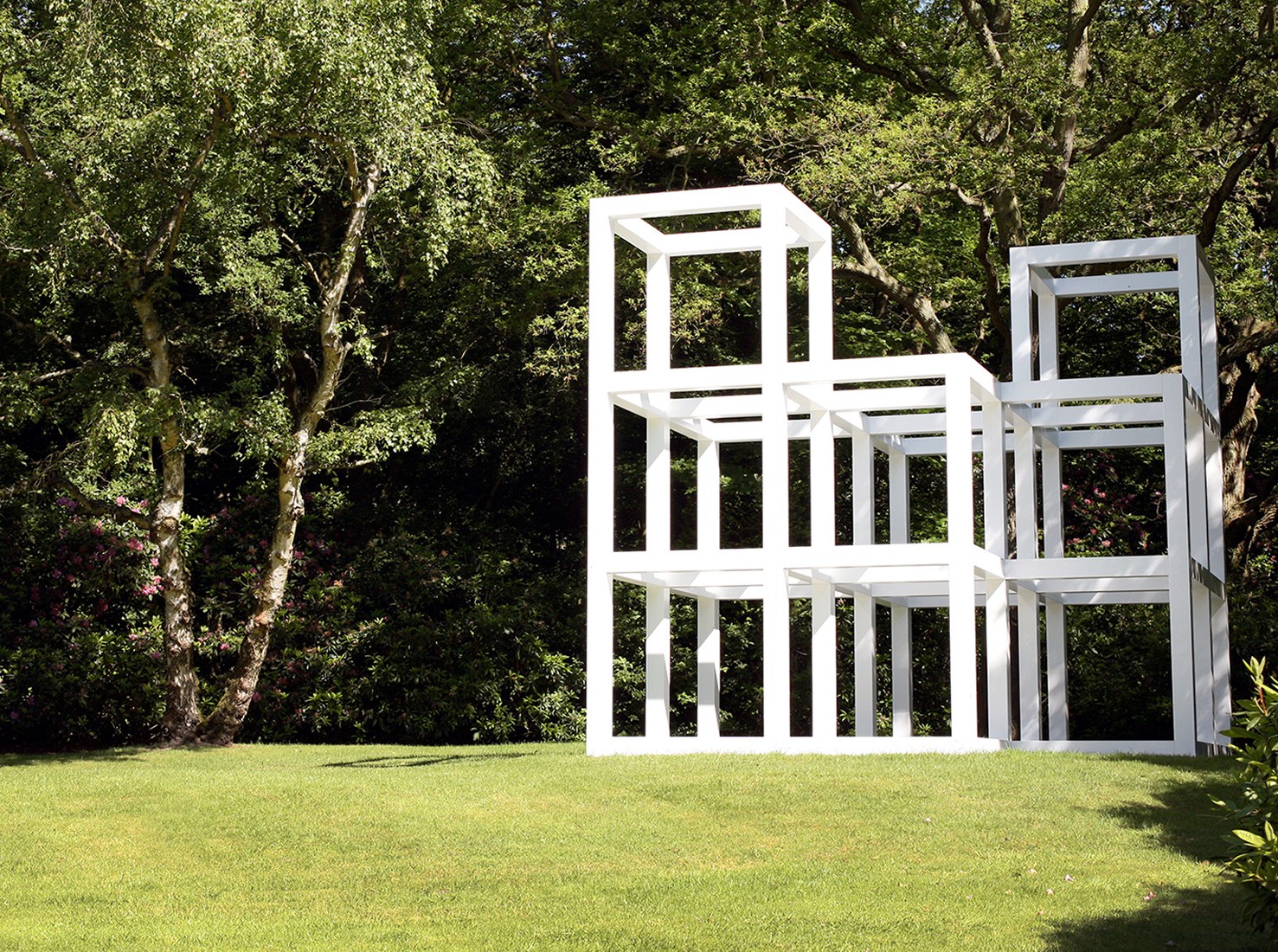
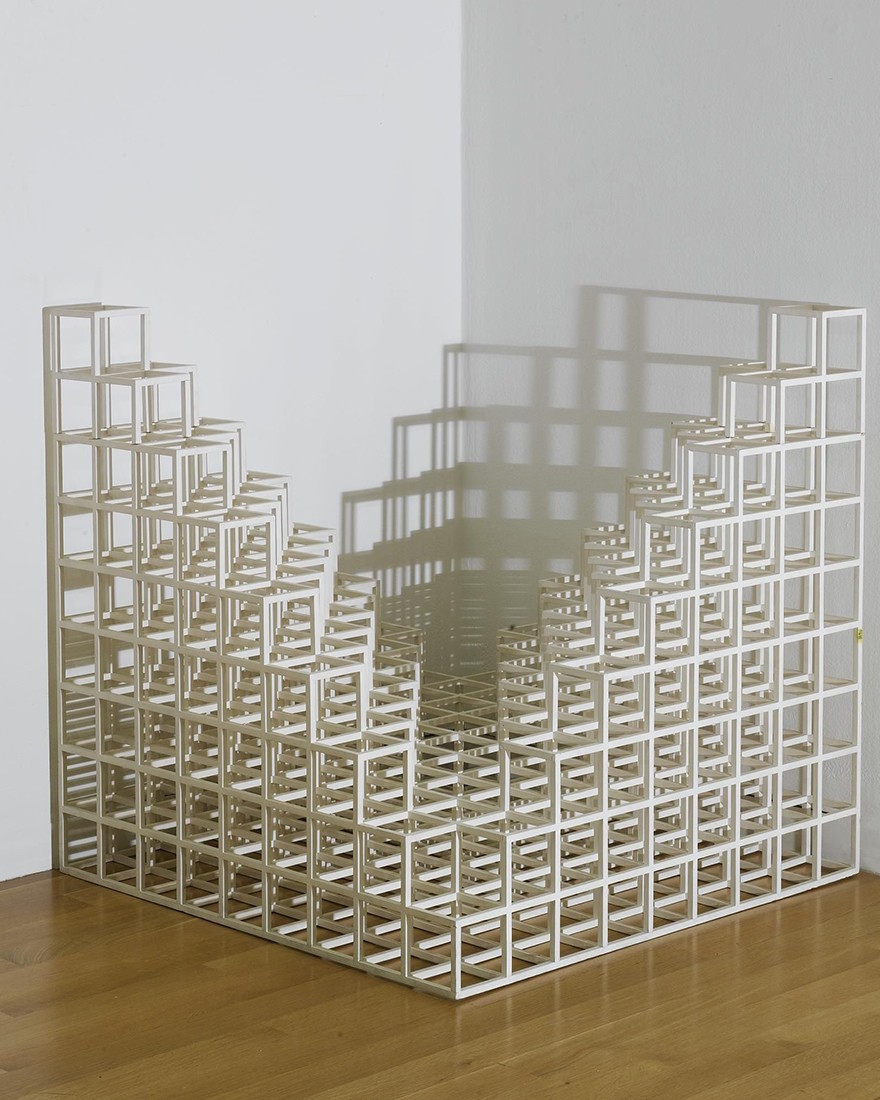
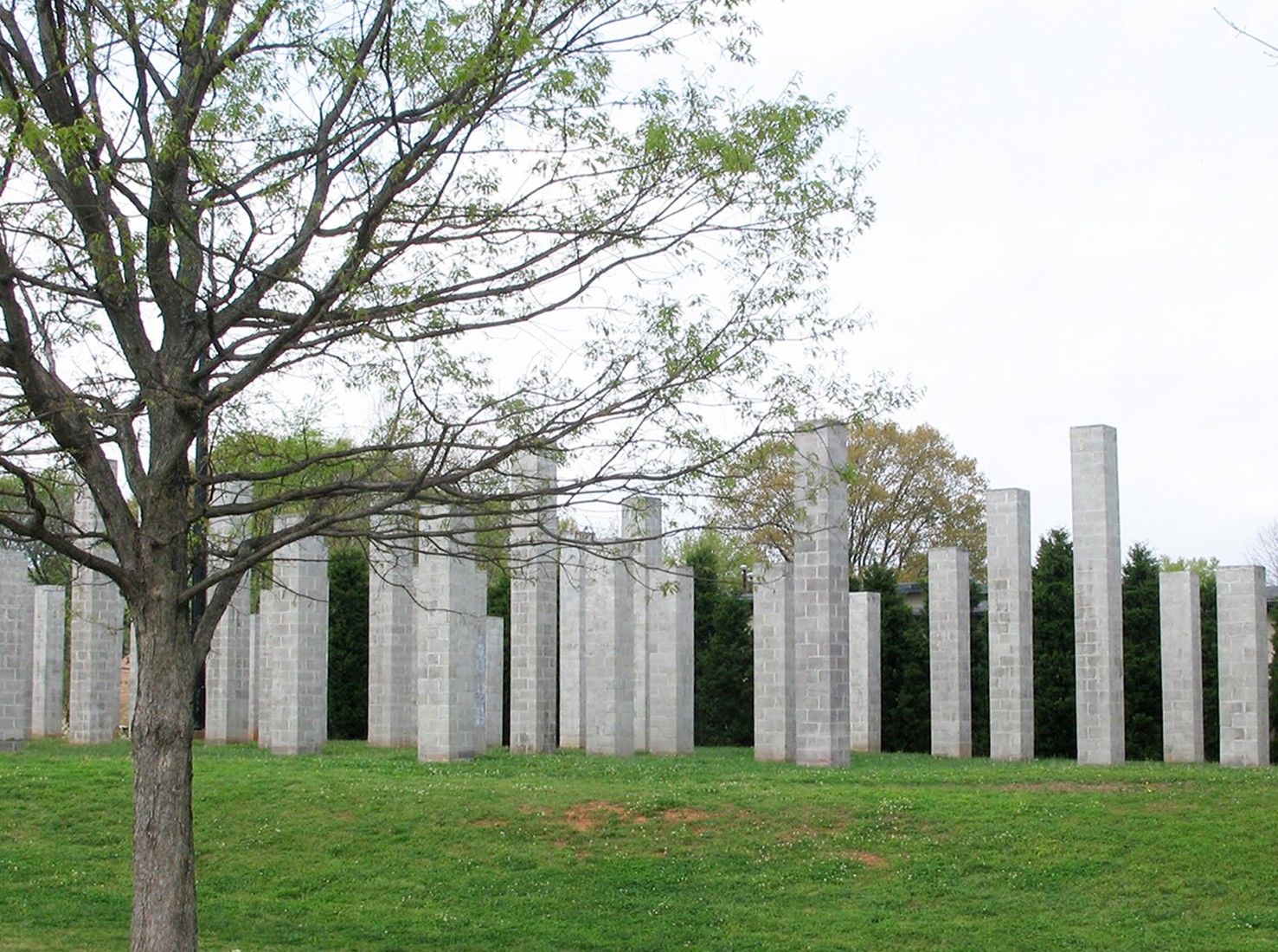
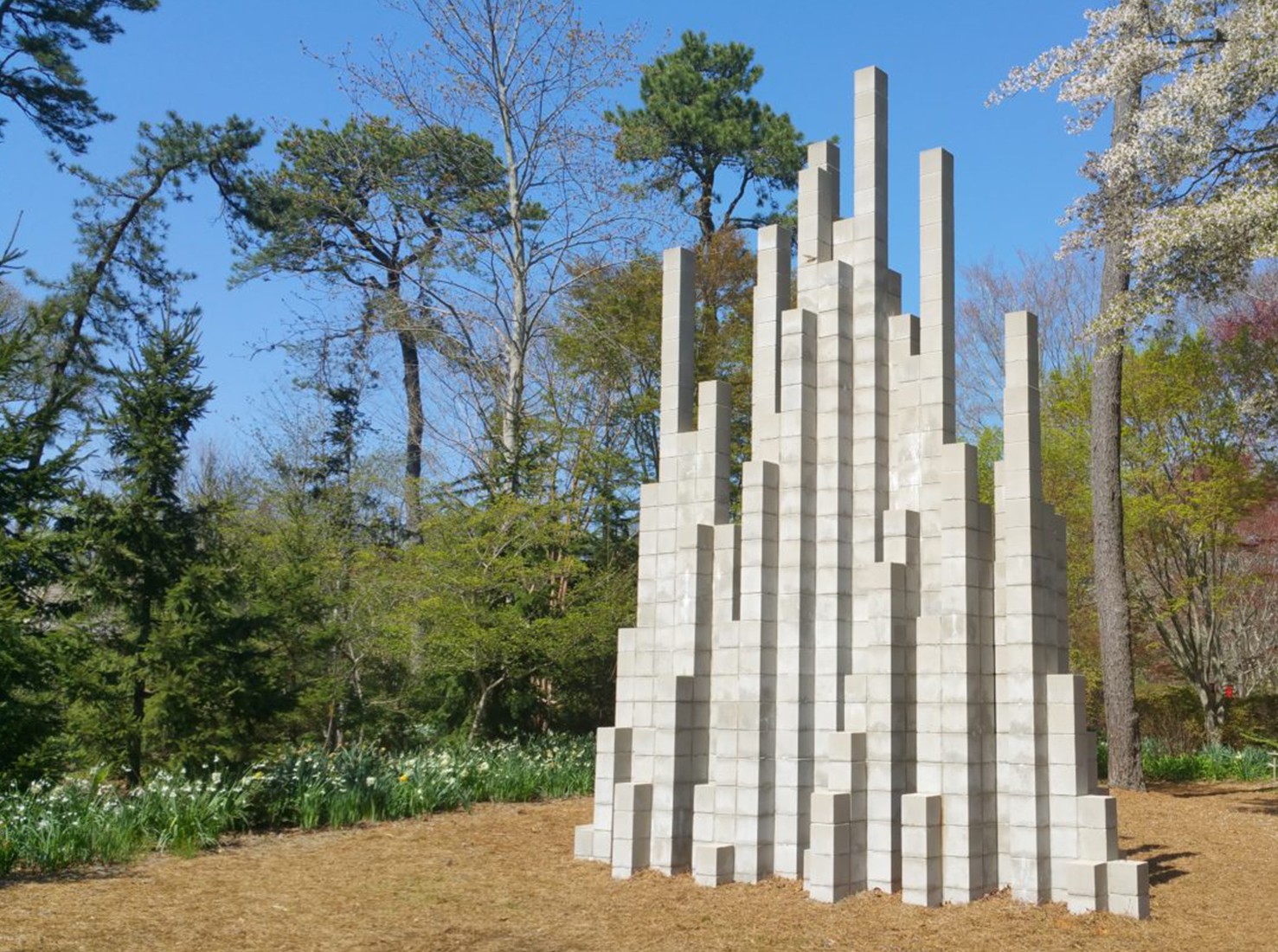
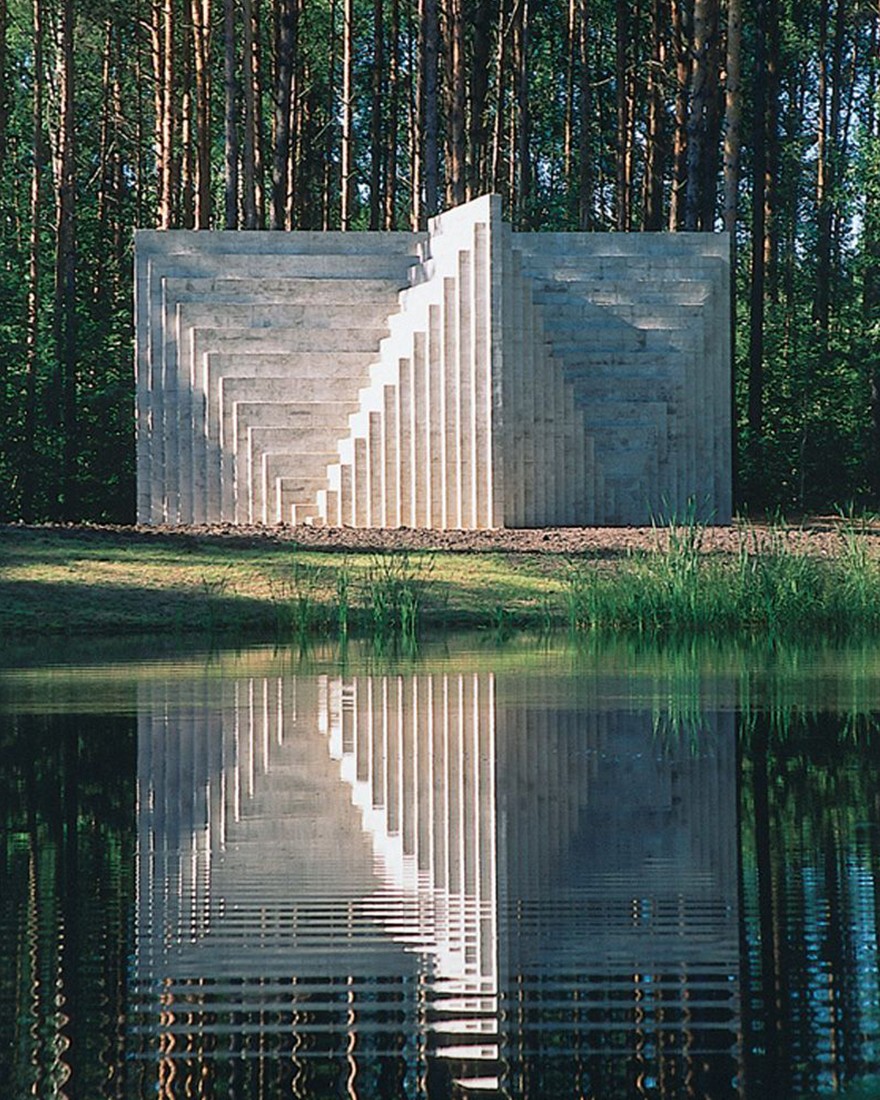
5 Alexander Calder
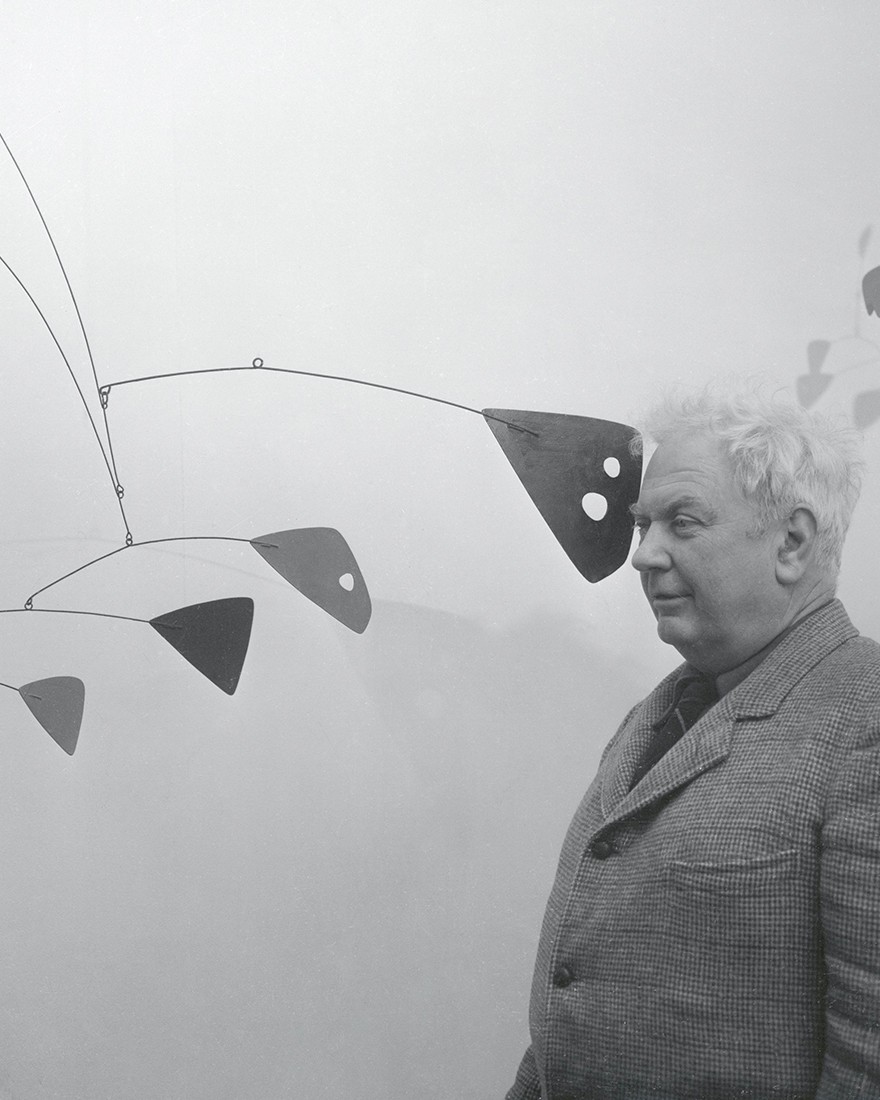
Alexander Calder (1898-1976), a graduated mechanical engineer, was a favorite of private collectors and international corporations. He gained world fame through his unusual kinetic sculptures. Calder invented the “mobilizing” (as Marcel Duchamp baptized him) – standing, hanging, mounted on brackets or vertical stands, in the form of light plates and attached to thin metal rods. The most expensive mobile sculptor – “Flying fish” (1957) left the auction for $ 25.9 million.
Calder’s first fame was brought by wire structures depicting circus and circus performers. On one point it is recognizable figures, on the other – the balls of tendons, on the third – the power lines of movement, as in the paintings of the futurists. In the later period, Calder focused his creative efforts on creating a monumental static sculpture of painted metal. The most famous works are “125” at John Kennedy International Airport in Queens (1957), “Spiral” for UNESCO in Paris (1958), “Red Sun” at the Aztec Stadium in Mexico City.
The work of this artist was astonishing. In addition to sculptures, Alexander Calder created theatrical scenery, paintings, illustrations, postcards, painted airplanes, and made decorations his whole life. His creative heritage includes 22,000 works.
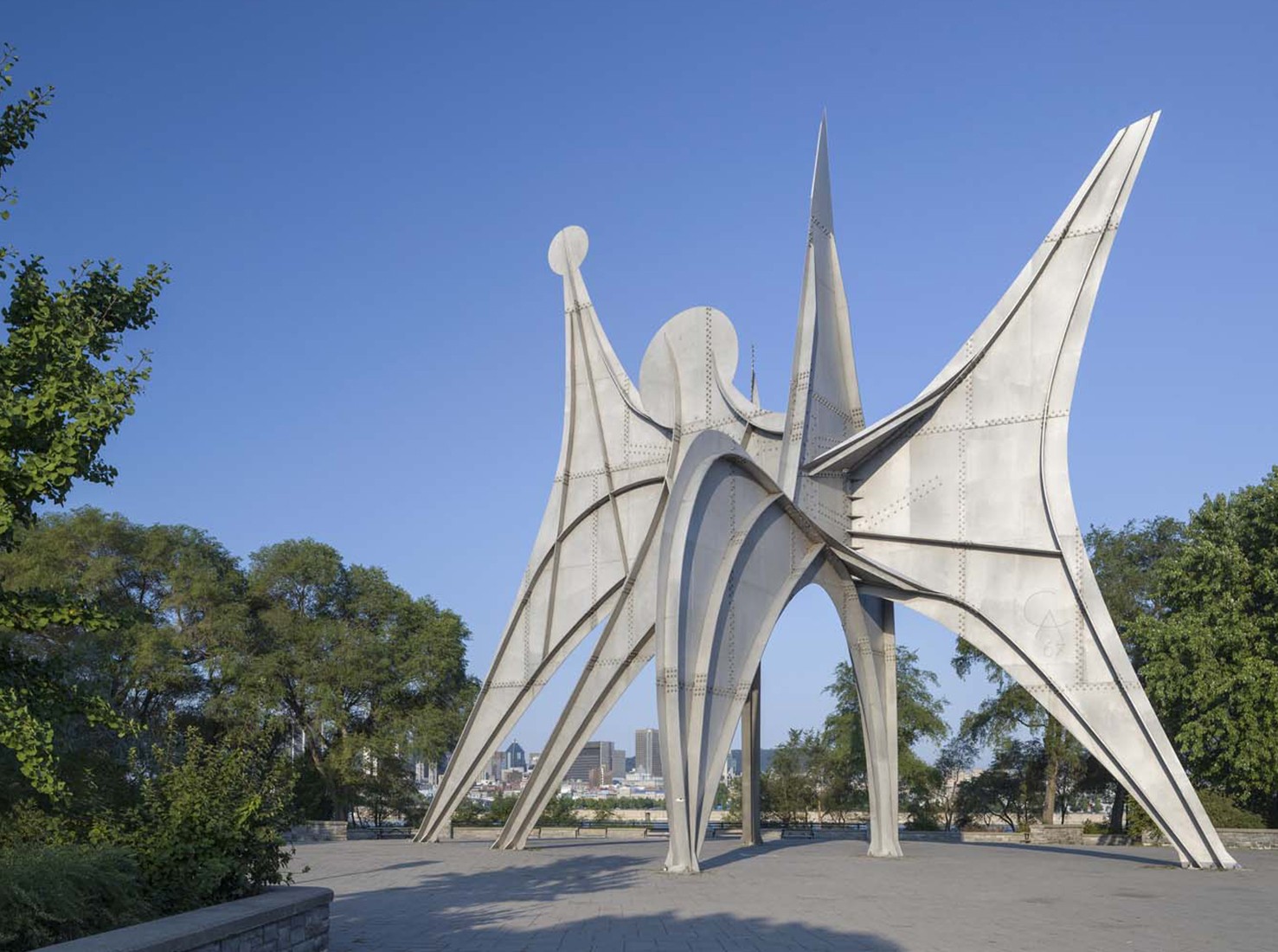
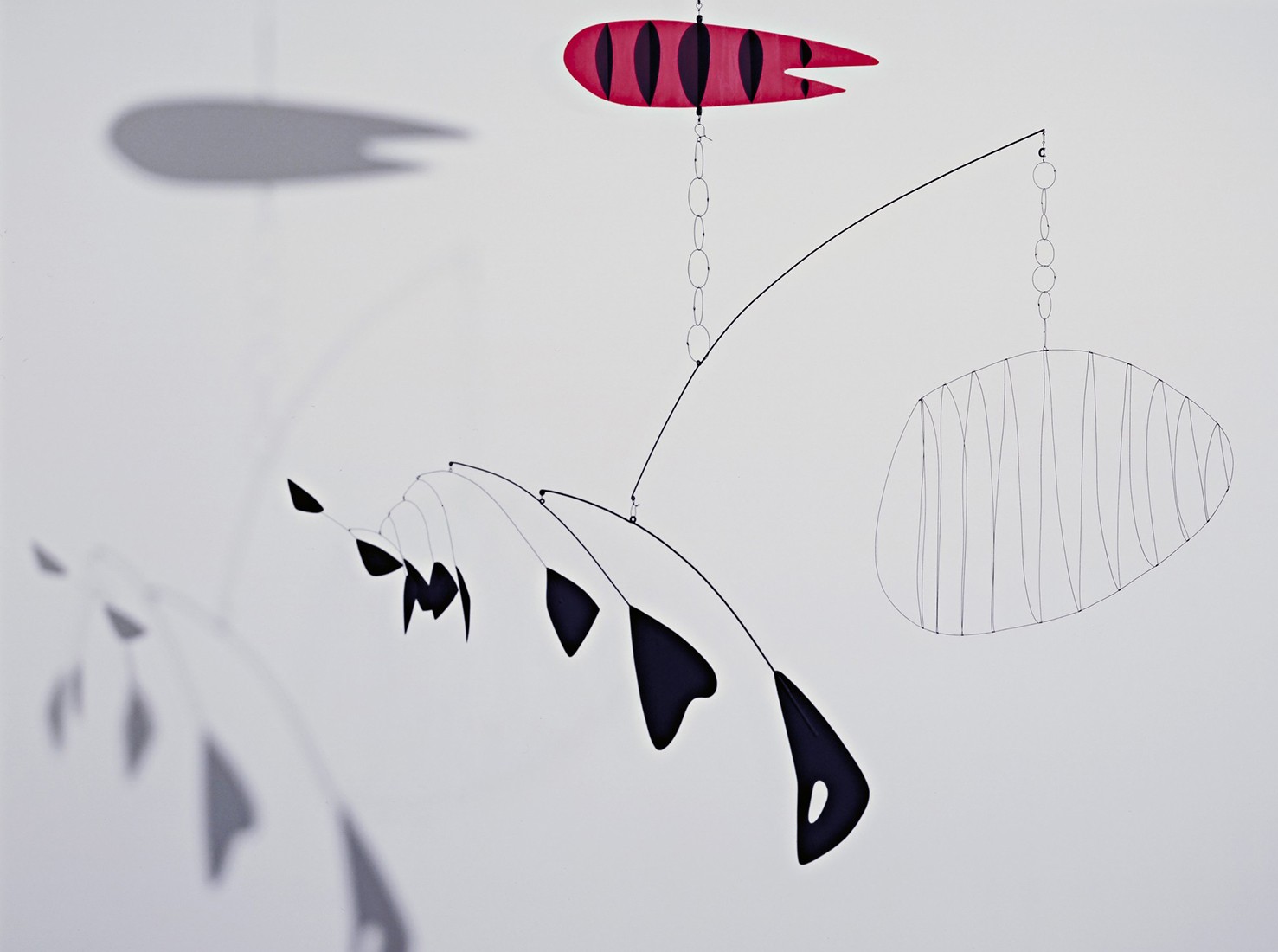
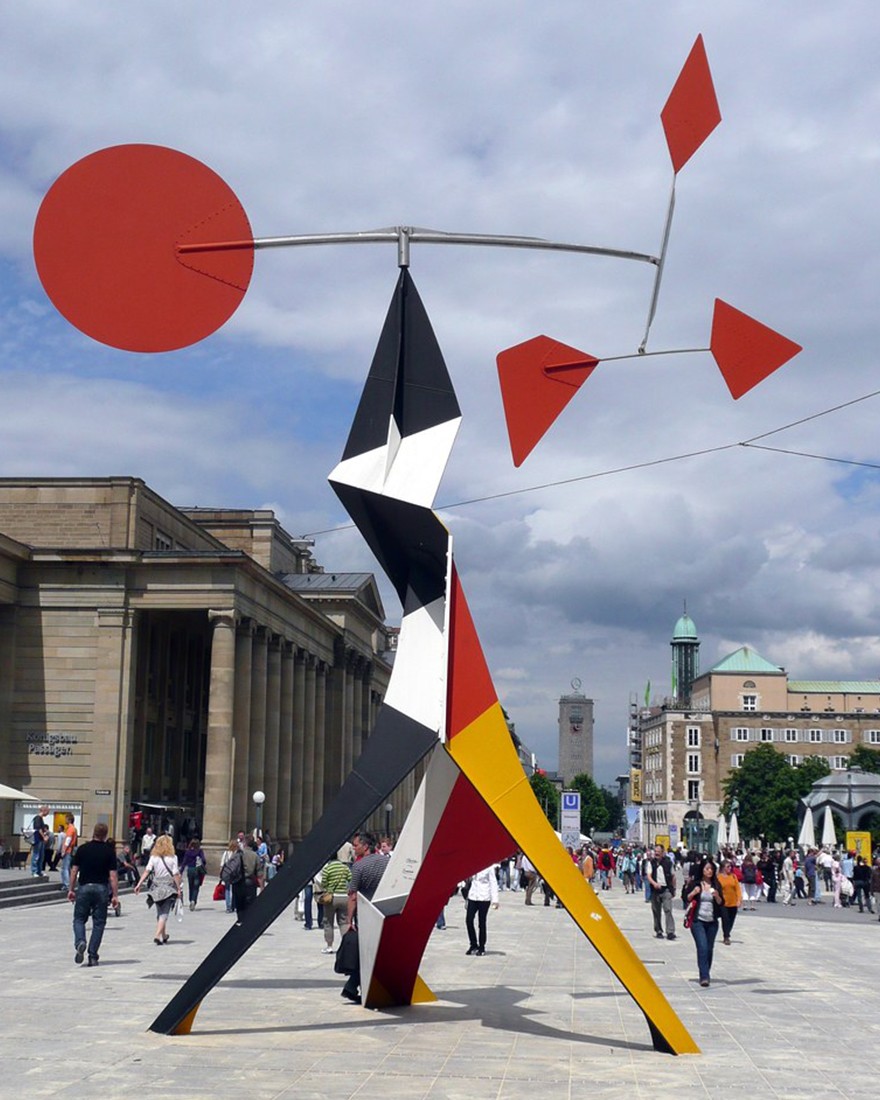
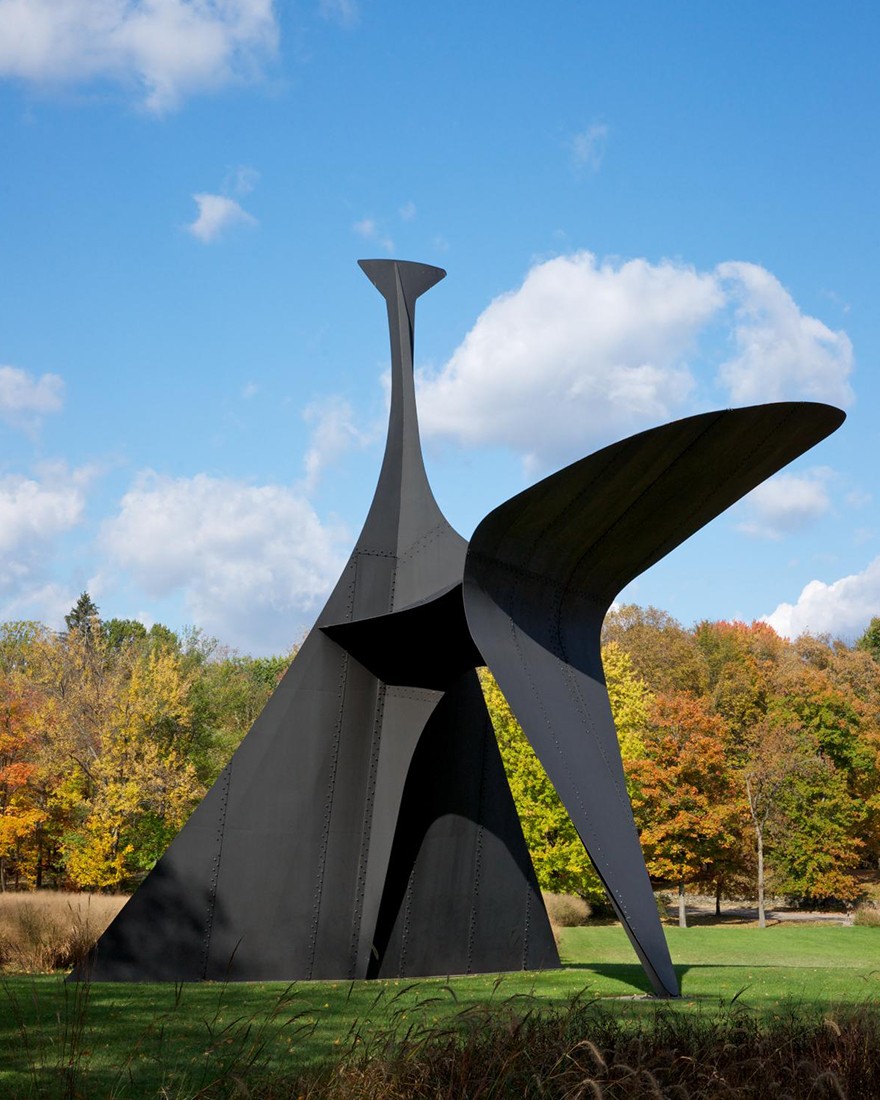
6 Louise Bourgeois
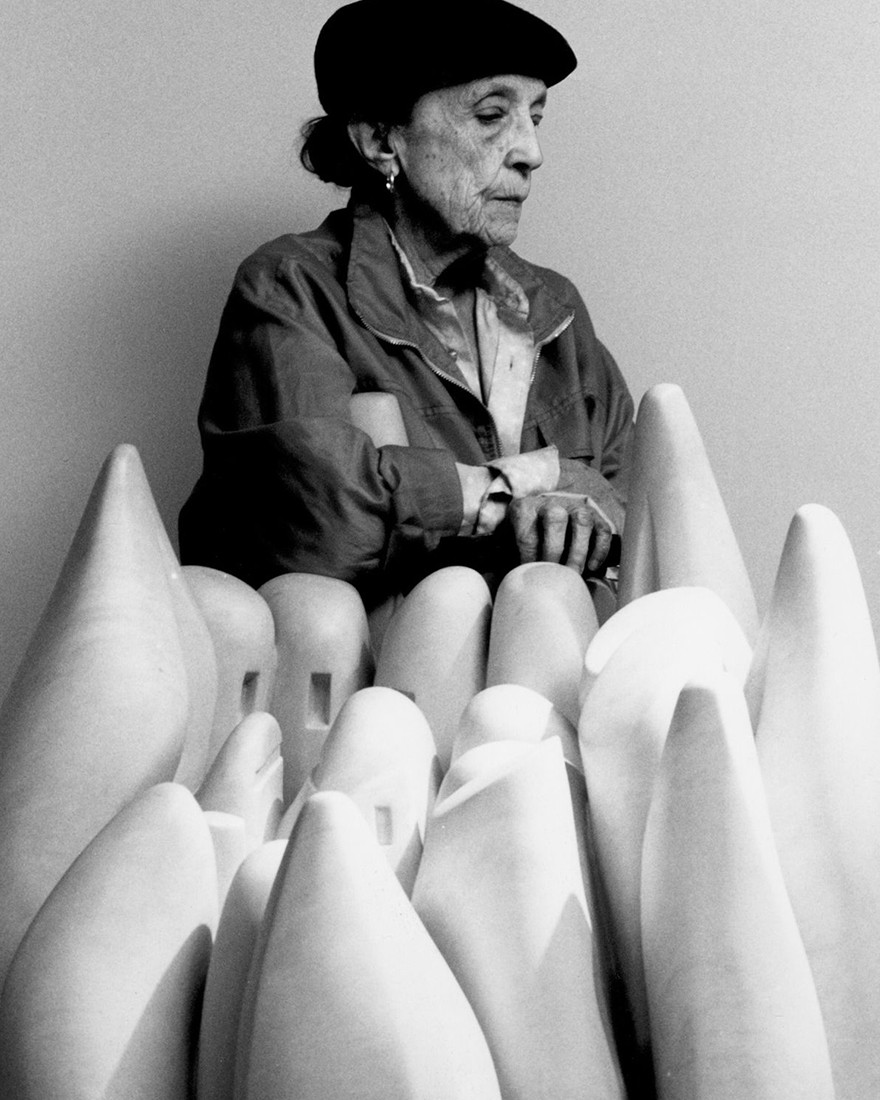
“I do, I destroy, I redo” was the title of Louise Bourgeois’s first big exhibition (1911-2010) at London’s Tate Modern in 2000. The creation of the “great and terrible” Bourgeois – about feelings of anger, guilt, and fear. “My emotions are disproportionate to my size. Not the emotions themselves, but their power – it’s simply intolerable to me. So I give their energy to the sculptures.” The main topics are traumatic childhood experiences and gender issues. In her early years, Louise witnessed her father’s adultery, survived her mother’s death, attempted suicide, and difficult relationships with relatives.
In 1938, she successfully married American art historian Robert Goldwater and moved to New York. Until her husband’s death in 1974, she gave her strength not only to art, but also to the education of three sons. Which had no effect on the theme of her work? Bourgeois – an example of an artist who mythologized the facts of his childhood, past obsessions, and nightmares.
Popularity and fame Louise brought metallic “spiders”, which she devoted to her mother, “balanced, intelligent, intelligent, patient, reasonable, sophisticated, insightful, irreplaceable, neat and useful, like a spider. In 2006, Bourgeois became the most highly paid female artist, after her sculpture “Mom” was sold at the auction for $ 4 million.
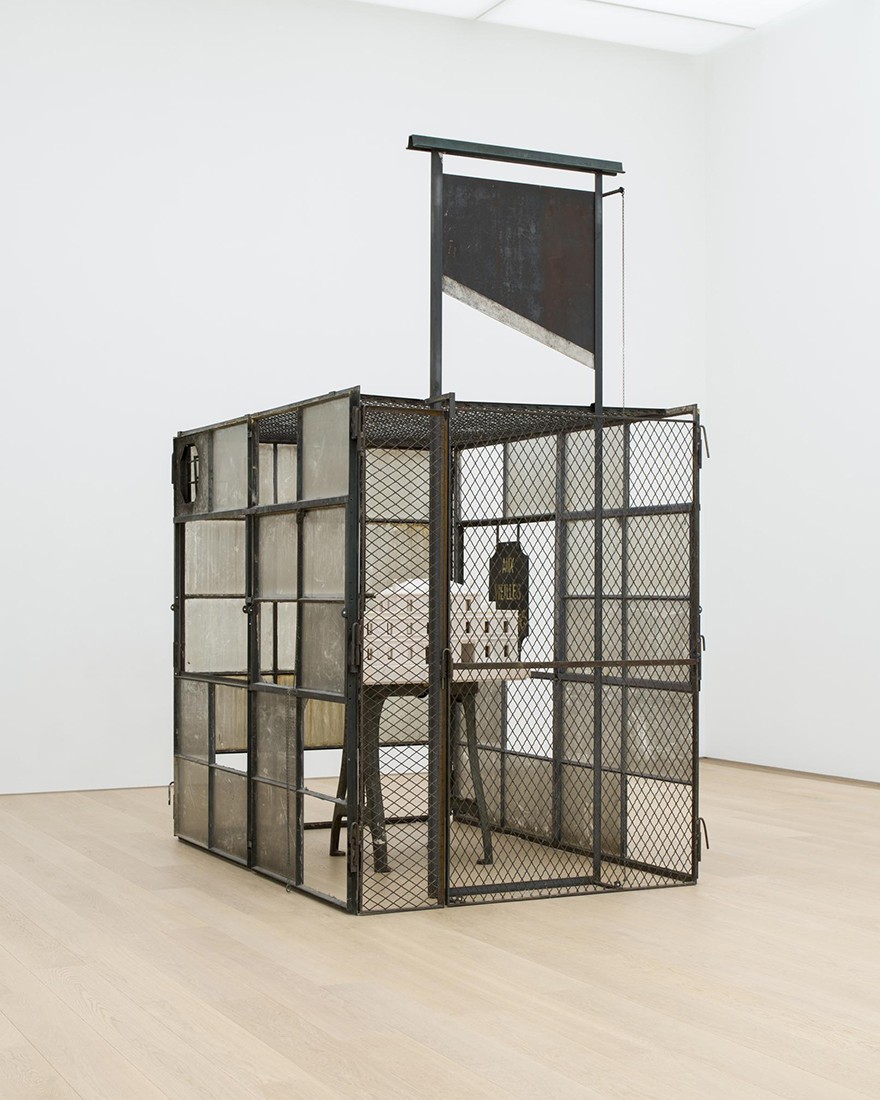
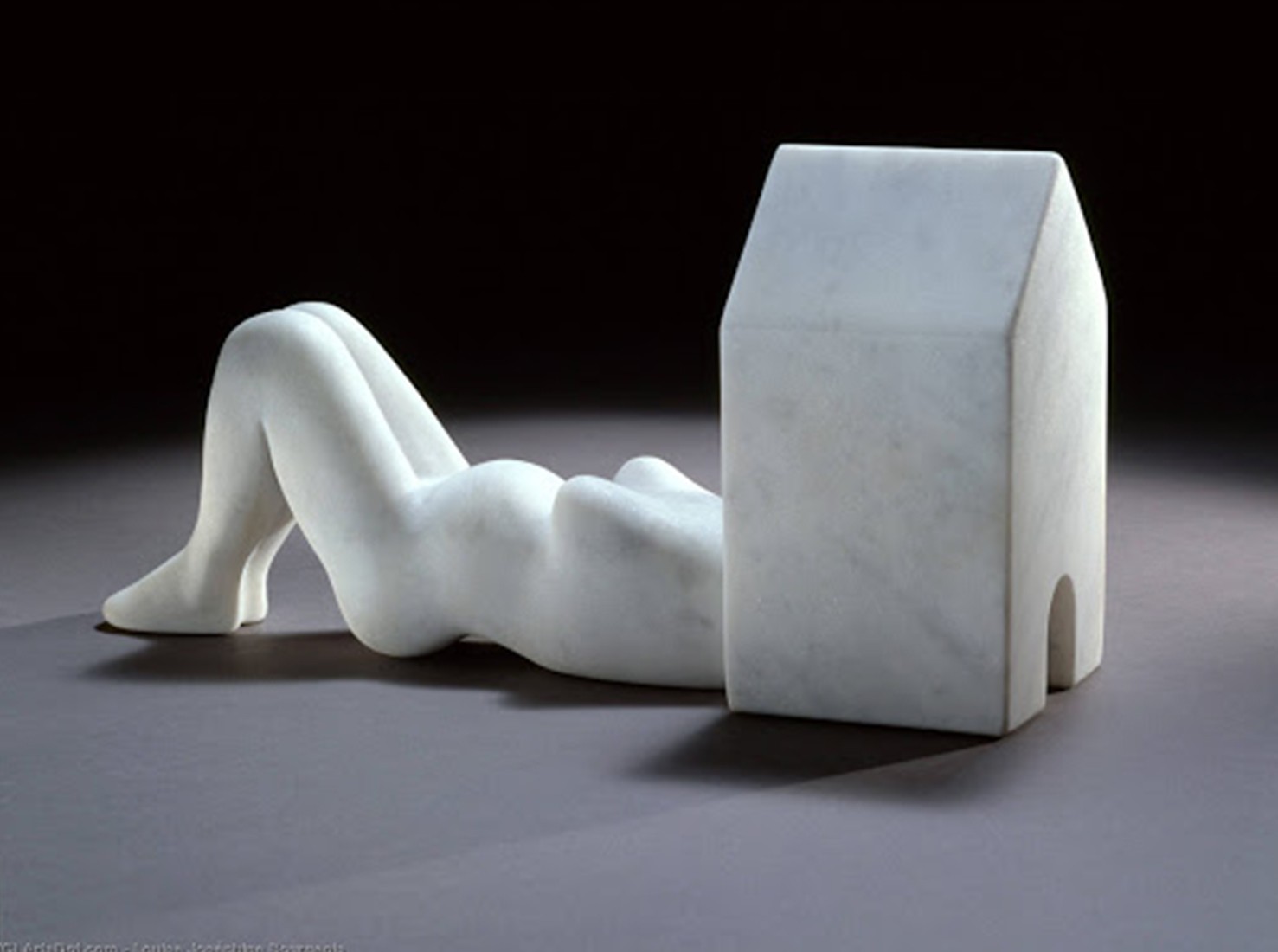
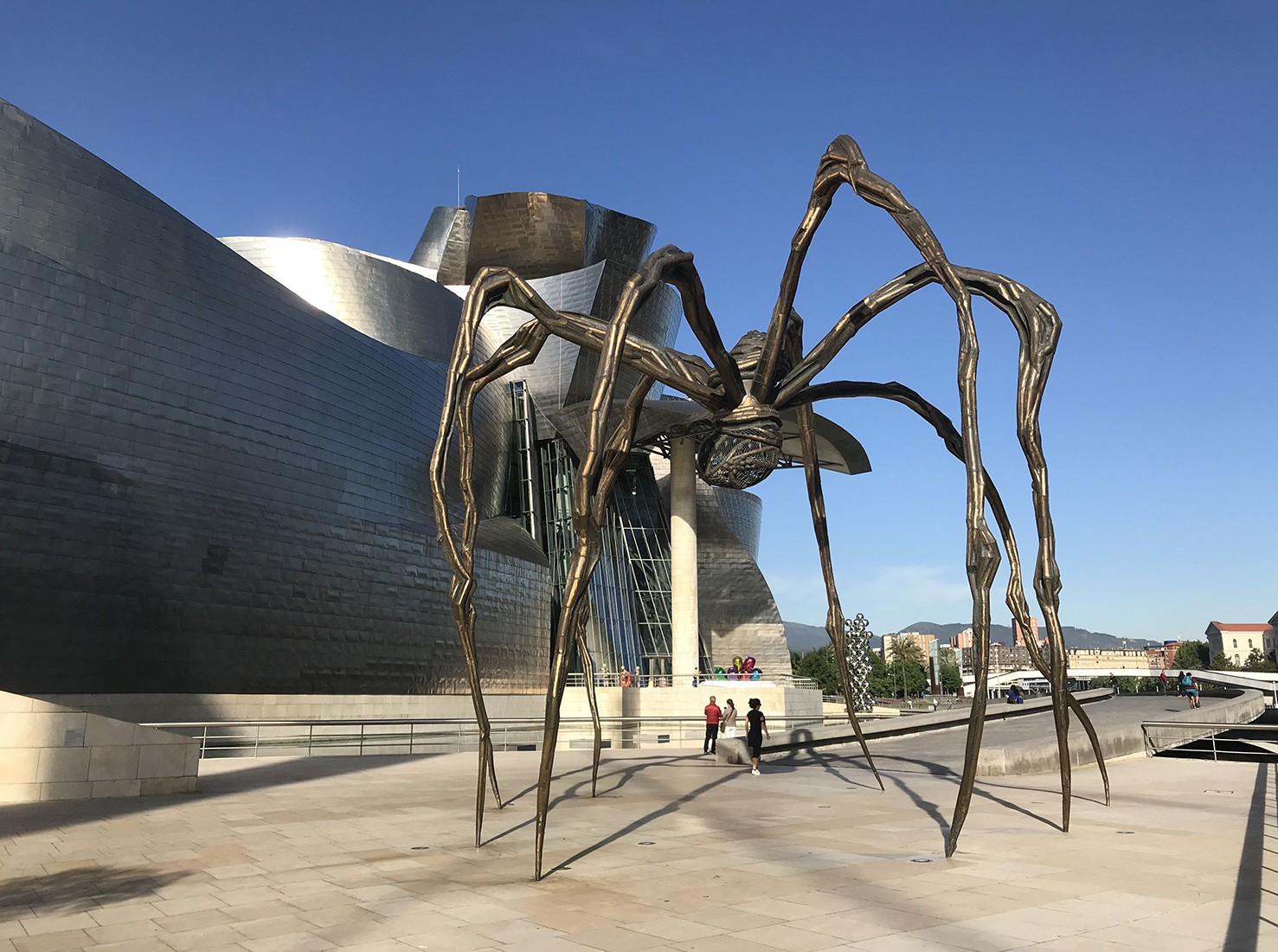
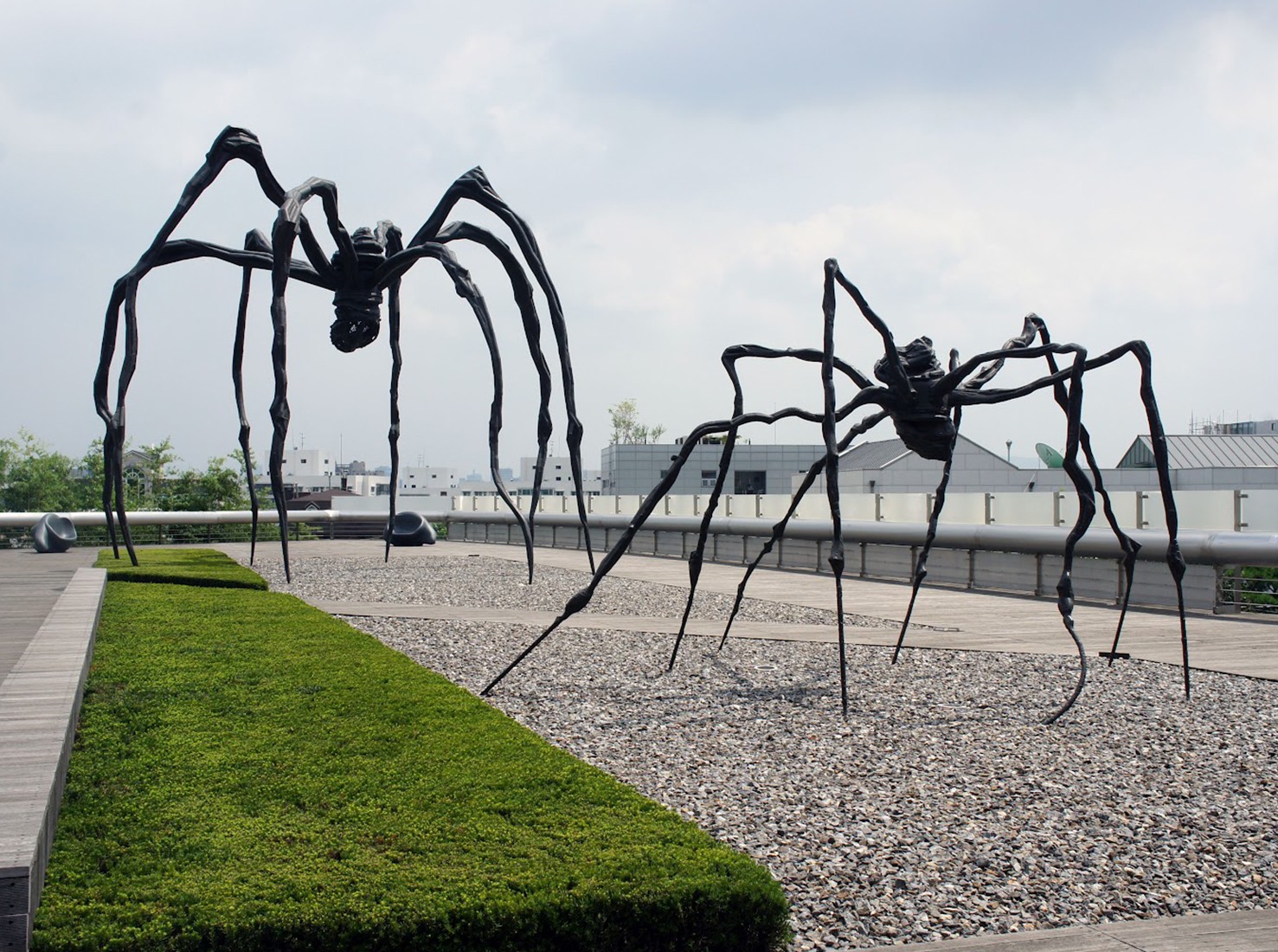
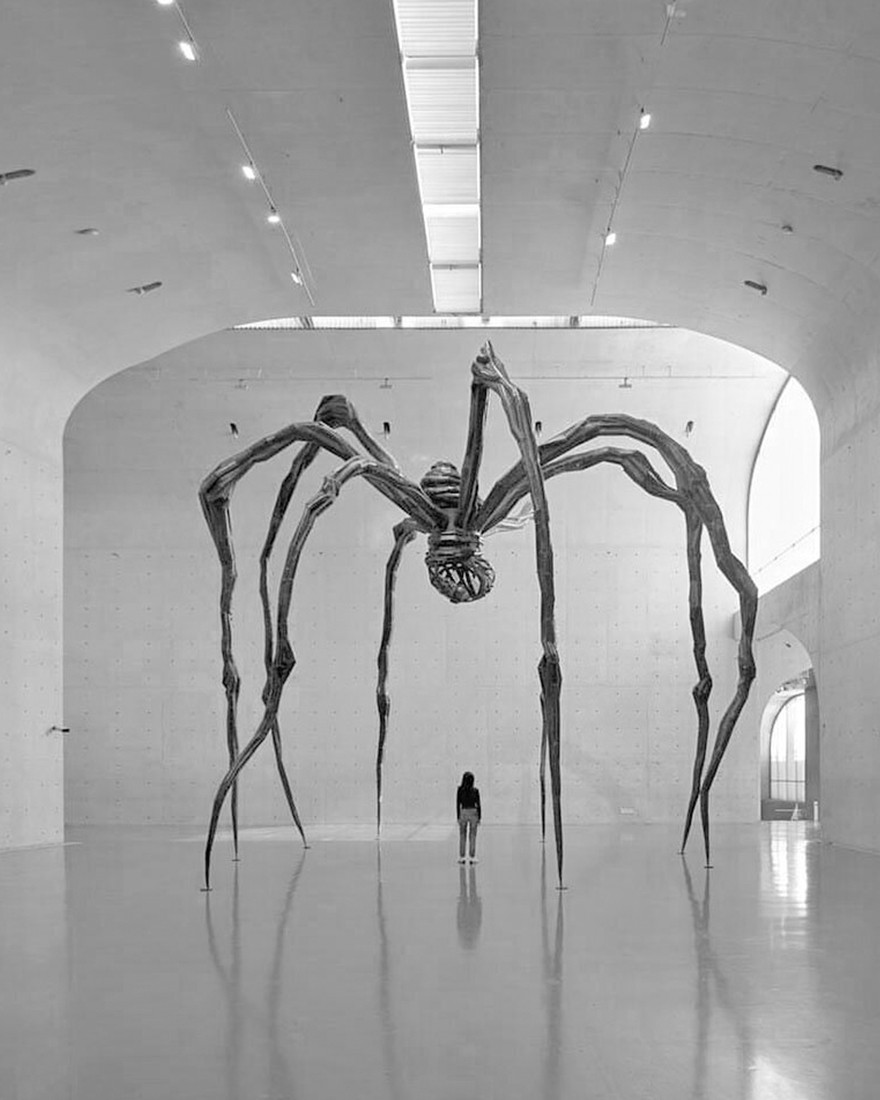
7 Anish Kapoor
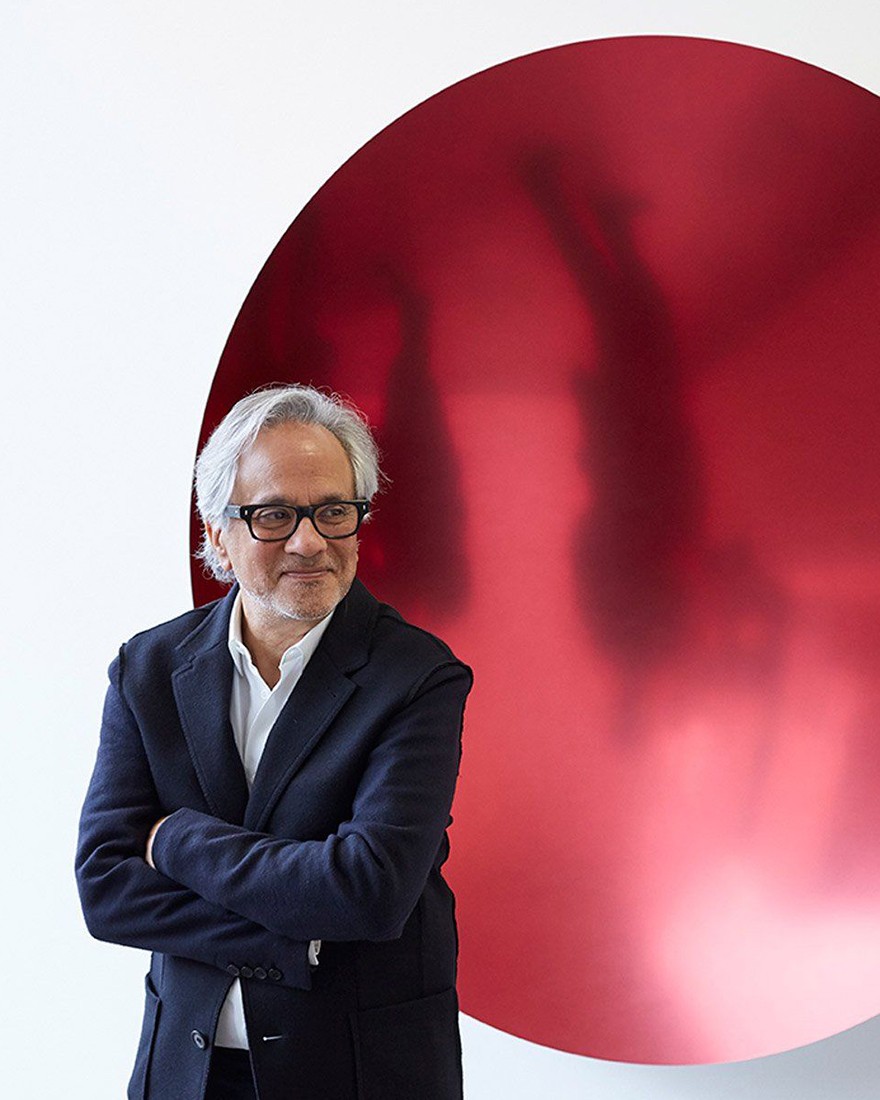
“Cloud Gate” by British Anish Kapoor (b. 1954) in Chicago is one of the most recognizable art objects in the world. The author is known on both sides of the Atlantic, no less than Jeff Koons: his works are now in every major museum of modern art, and prices for his individual masterpieces exceed $ 1 million. Anish Kapoor’s works are disgusting and delightful, sometimes simultaneously.
The name of Kapoor is strongly associated with the Olympics and Versailles. For the London 2012 Olympic Games, he built the 120-meter Orbit, the highest sculpture in the UK that could be climbed down the tunnel slide from the observation deck. And in French Versailles, he placed the object, which journalists dubbed Marie Antoinette’s vagina.
The artist is not tired of expanding the palette of materials: he works with fiberglass, fiberglass, steel, granite, colored wax. Kapoor has acquired the rights to use the blackest paint in the world: high-tech material from which the pigment is made absorbs 99.6% of light, which brings it closer to the black hole in terms of properties. The forms of Kapoor’s sculptures are usually simple, have smooth contours, and are brightly colored. Often it uses a mirror surface, which distorts, reflecting the environment and the viewer himself.
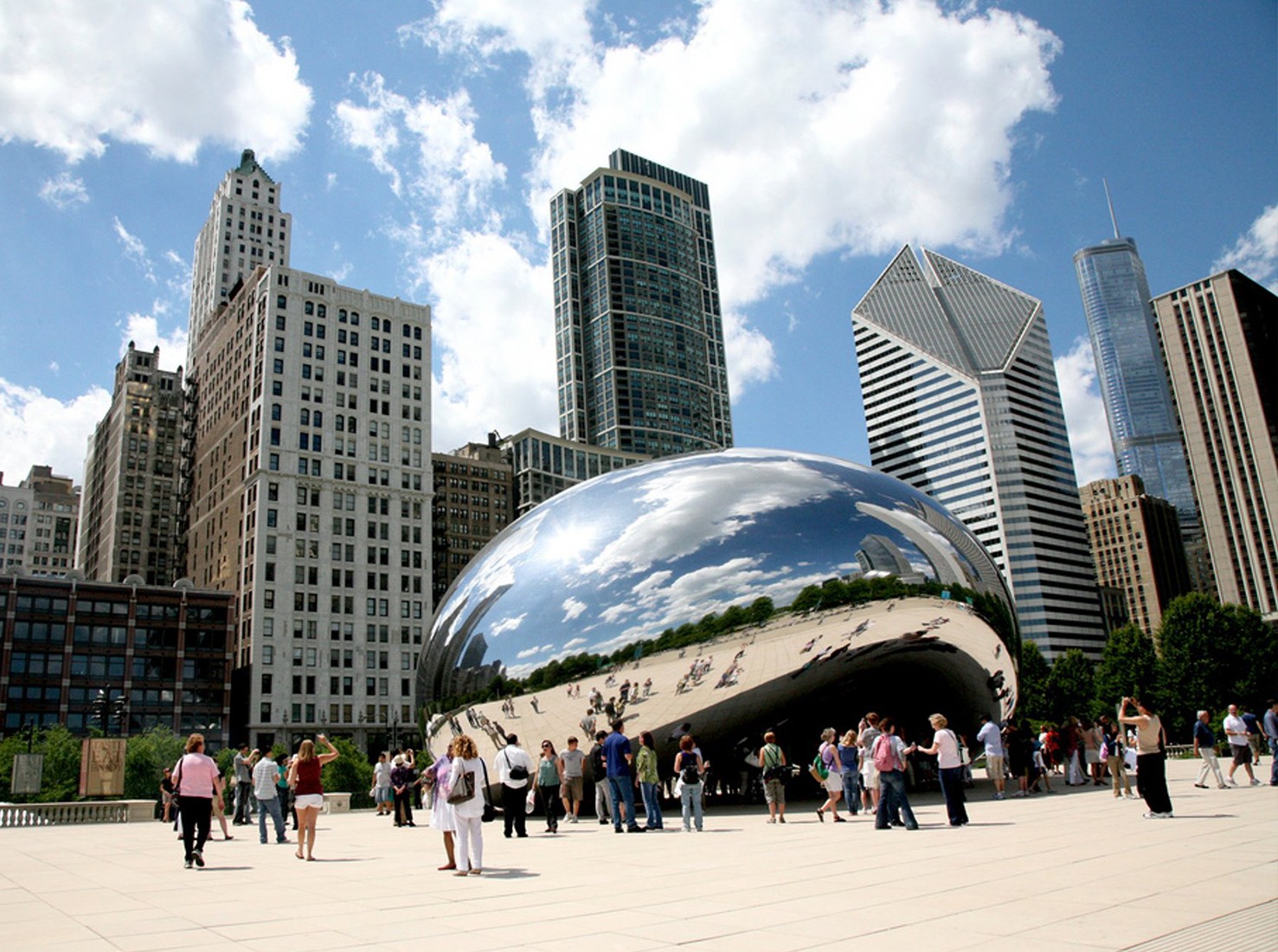

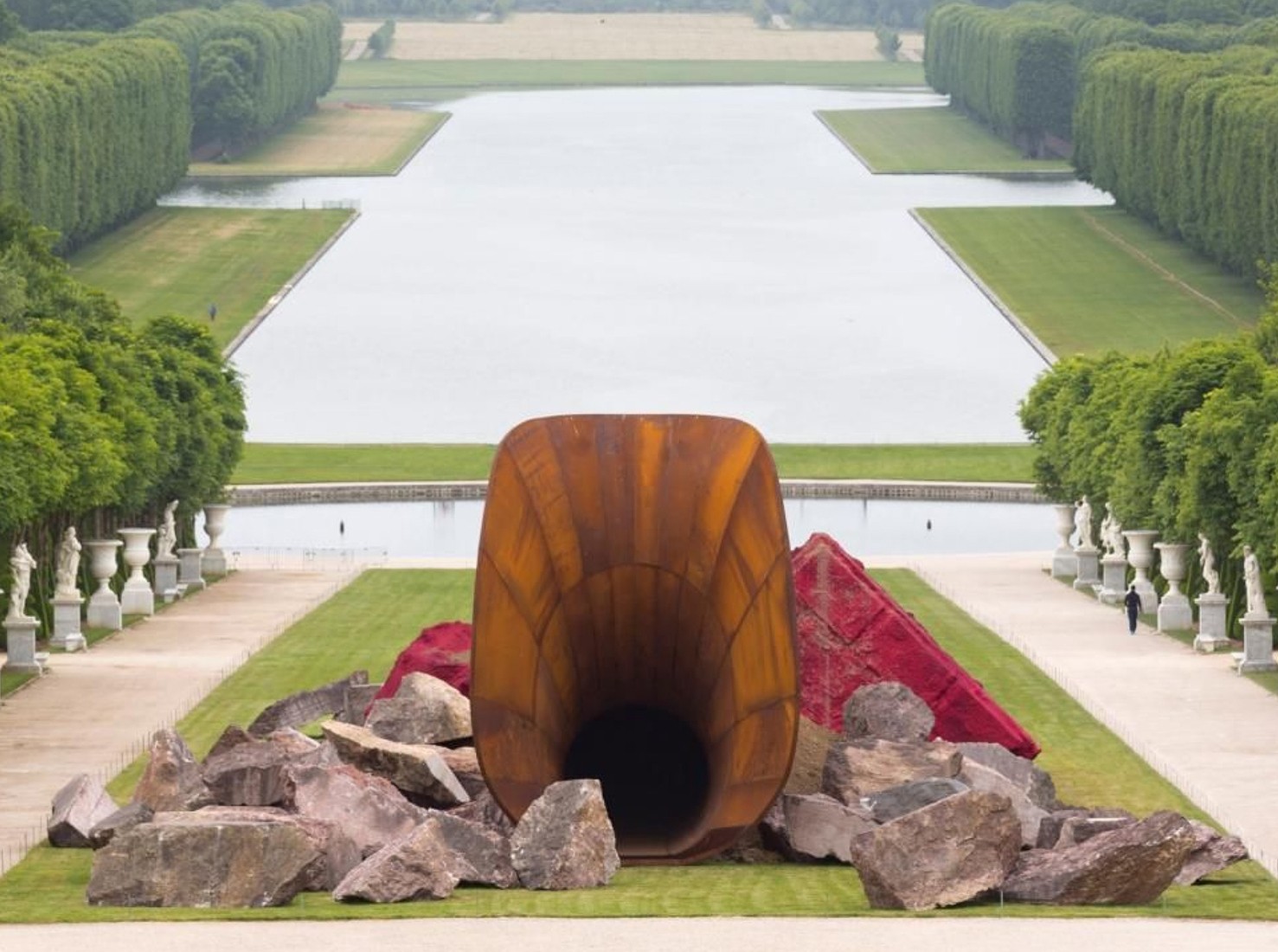

8 Erwin Wurm
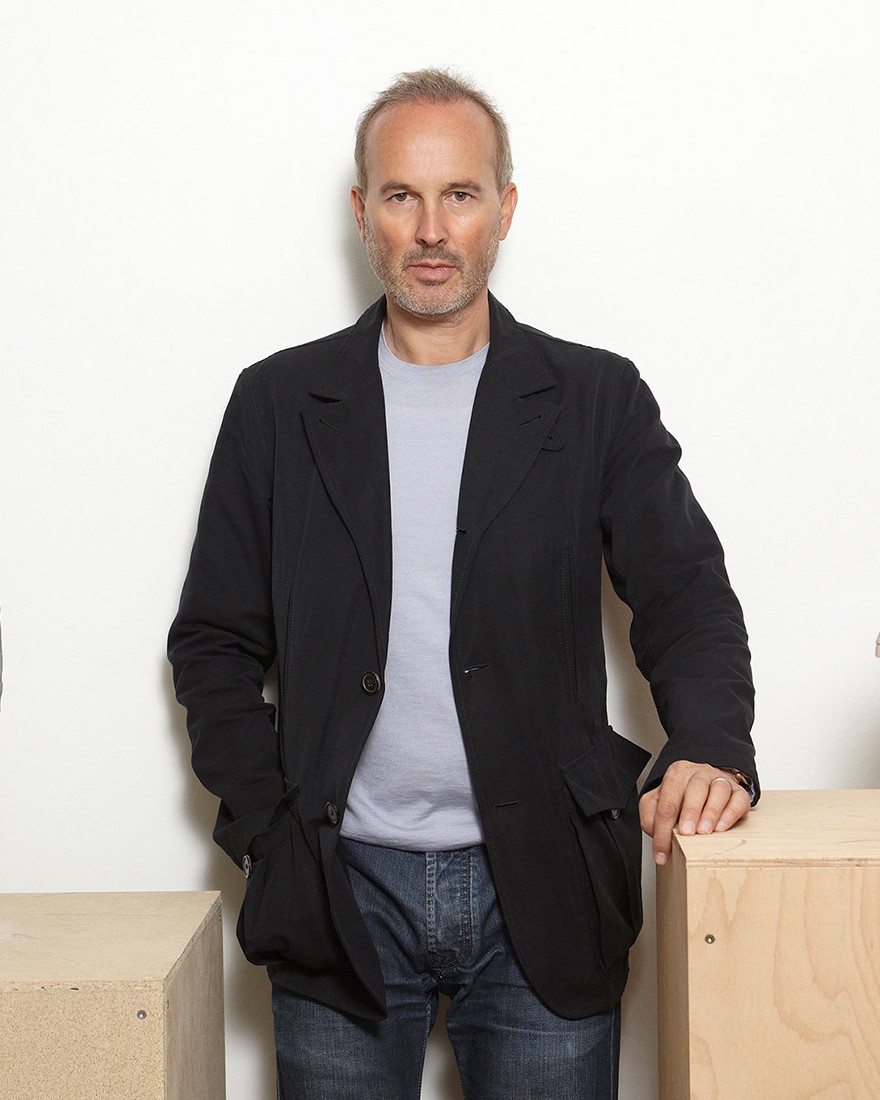
The son of a police officer, Austrian sculptor, photographer, director, author of ironic and shocking objects, Erwin Wurm (b. 1954) calls himself the ancestor of One Minute Sculpture – a mixed genre that combines performance and sculpture. According to the author, he works with “boundary” states – short moments between movement and statics.
Erwin Wurm is the author of flattened houses, inflated cars, and kissing sausages. Erwin Wurm deforms buildings, boats, human bodies – everything he touches. “It was interesting for me to aestheticize aggression and show it through my work. That’s why I deformed cars, famous buildings like the Guggenheim Museum and of course human bodies”. But Wurm does not laugh, he ridicules and resents. “The world has become obsessed with giant glossy objects, everything has become better, bigger, and it’s just unbearable, we have to do something about it”.
Wurm’s sculptures are a story about consumer society, globalization, glossy. He started in the 1980s. Over the years, his art objects have become more international, and the challenges are more complex. Thus, for the Venice Art Biennale in 2017, Erwin Wurm involved engineers from the Gorky Automobile Plant. According to the plan, the GAZ truck stood vertically on the cab, and a ladder was built into its body, through which visitors could climb the observation deck.
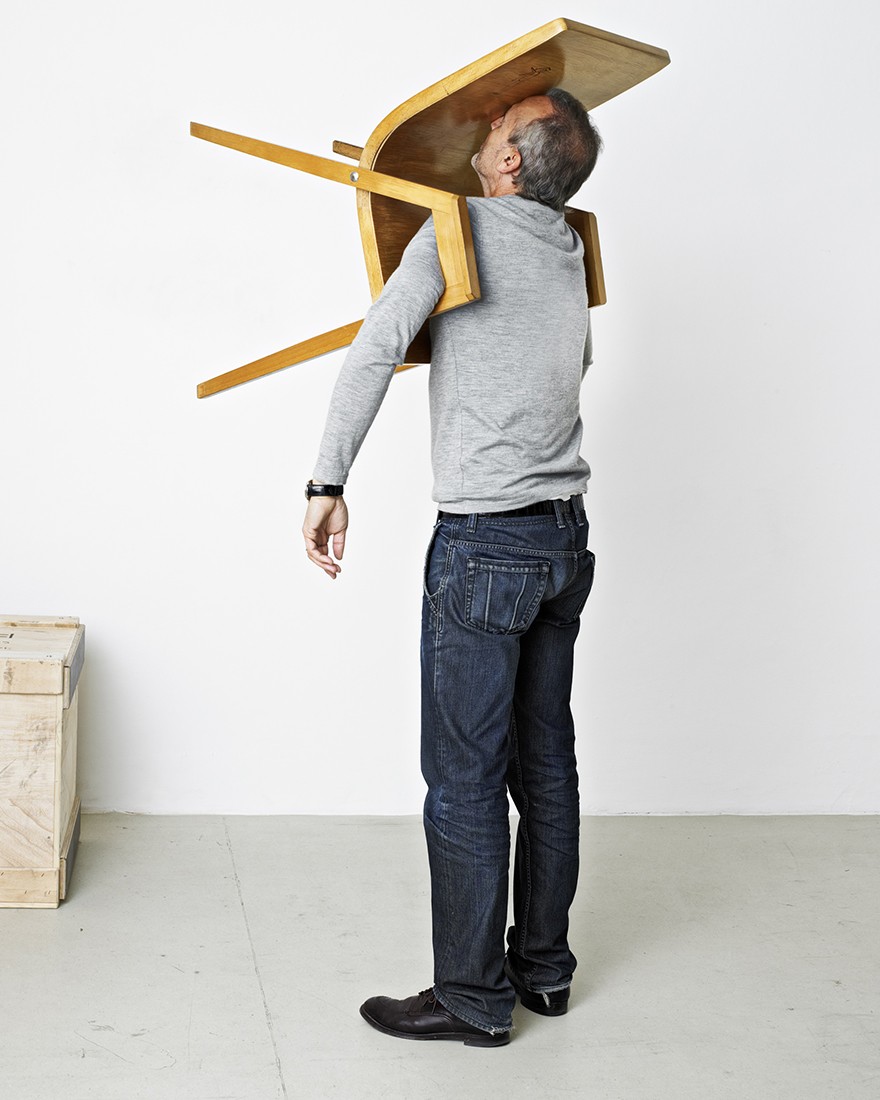
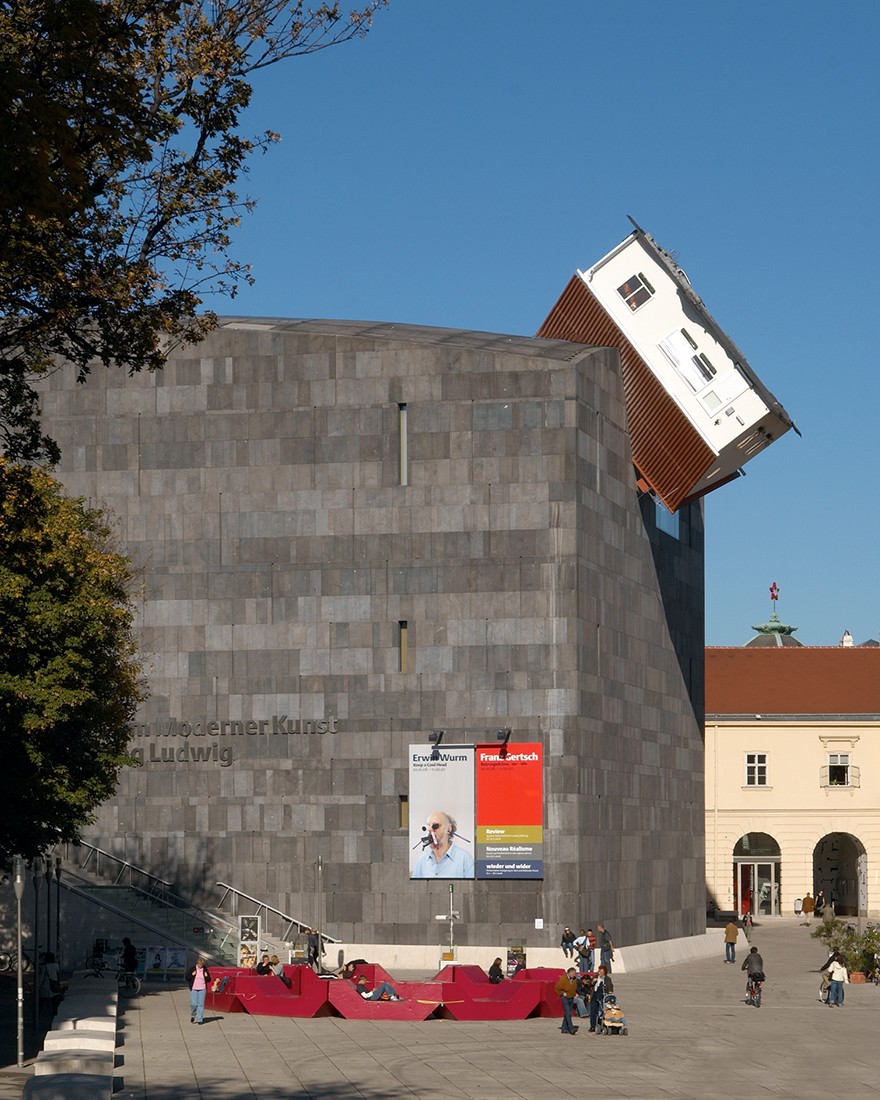
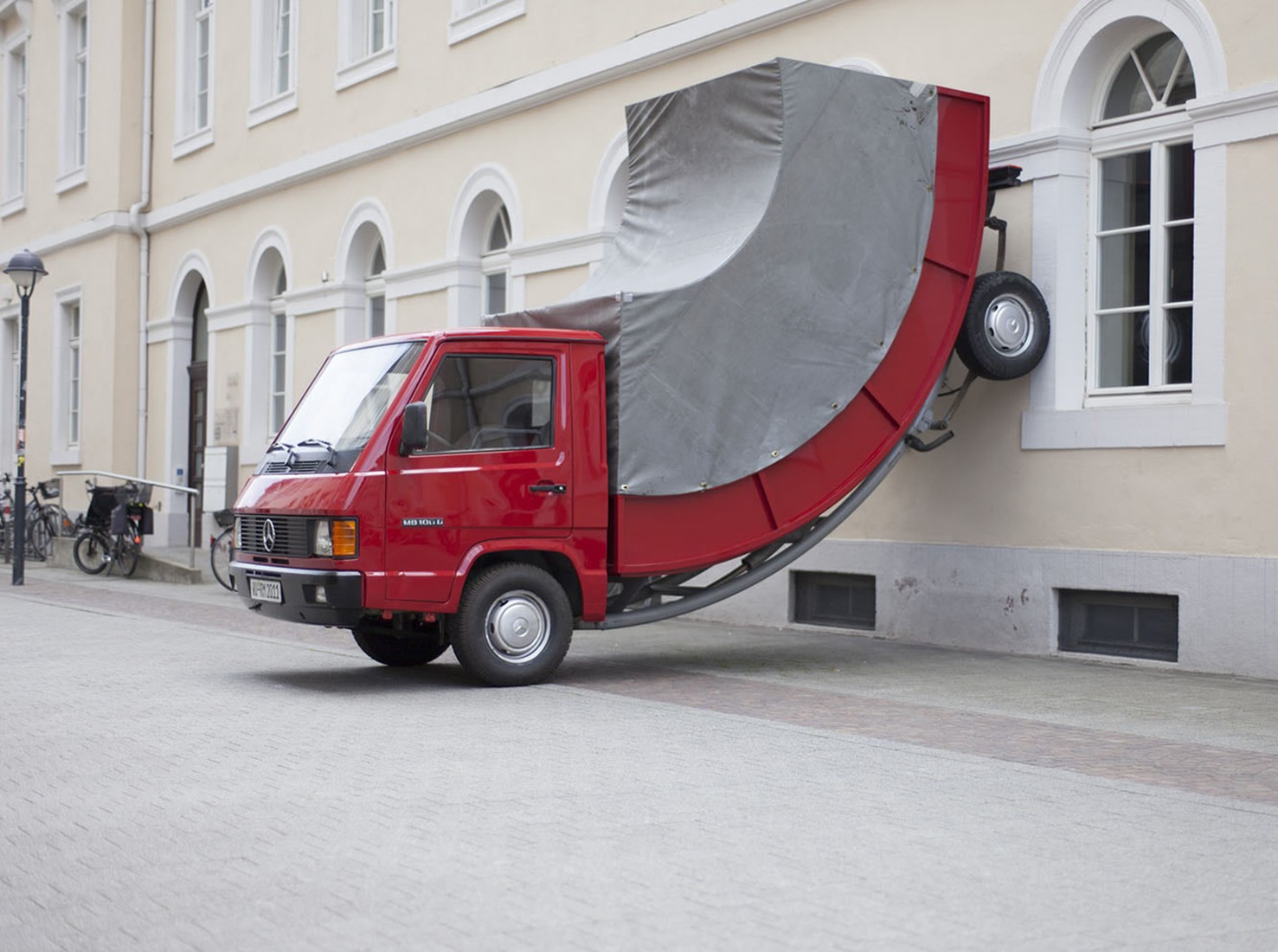
9 Richard Serra
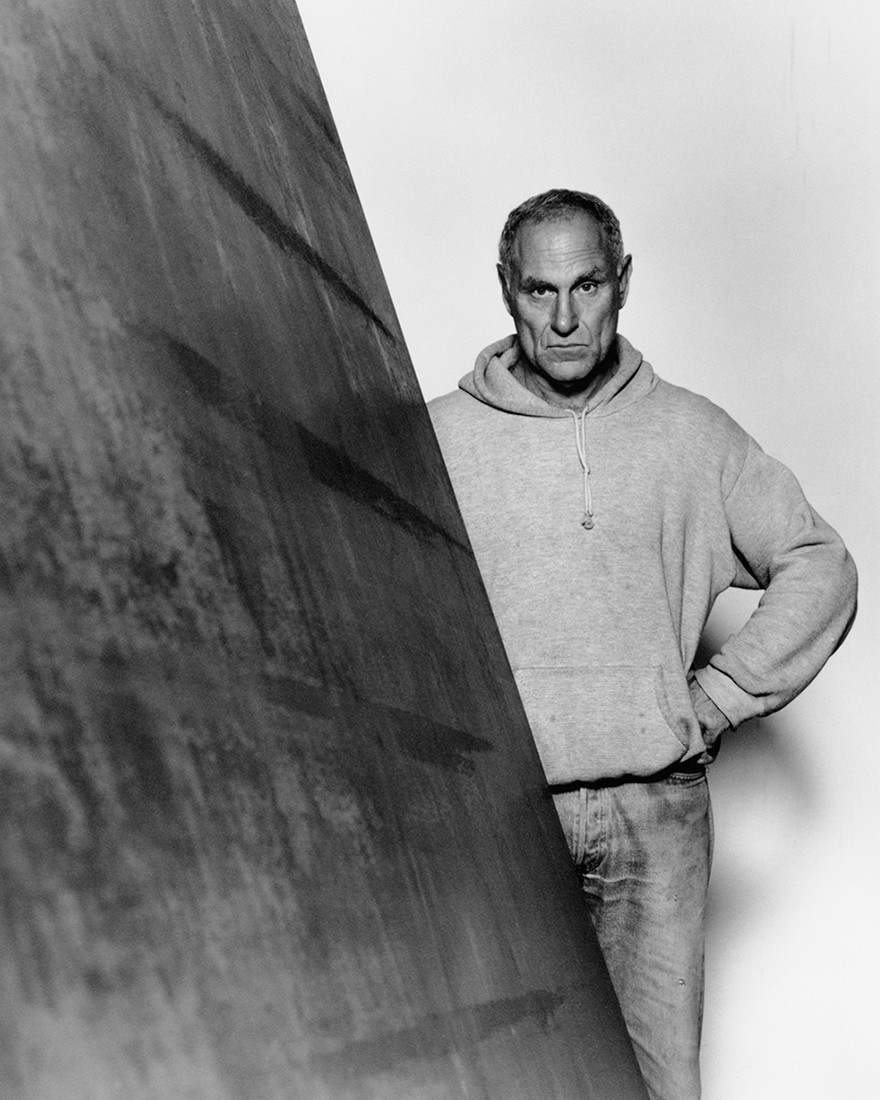
Richard Serra’s (b. 1939) multi-tone, multi-meter, minimalist steel installations are similar to the architectural objects. In his work, there are arches, arcs, spirals, cowards. As an experienced designer Serra carefully plans scenography for his audience: entrances, passages, routes, exits, viewpoints, sound, and light …
A professional artist, a graduate of Yale, who had studied in France and Italy, Serra first created sculptures of vulcanized rubber and neon tubes, then came to the sheet steel, twisting this brutal material with swirls and spirals. “My works are not decorations, illustrations, or depictions of a place. They become part of a place and restructure its organization in terms of concept and perception”.
One of his works, Tilted Arc (1981) in New York City, is particularly famous. It was dismantled by an American court order. The following claims were made: it was too expensive for the taxpayers, covers the view of a part of the square, casts threatening shadows, it is constantly drawn graffiti. And since the “Arch” could not be moved or resold, the dismantling was tantamount to destruction. Hearings “on the Arch” were held in 1985: 122 people were against dismantling, 58 voted for, but the sculpture was still dismantled.
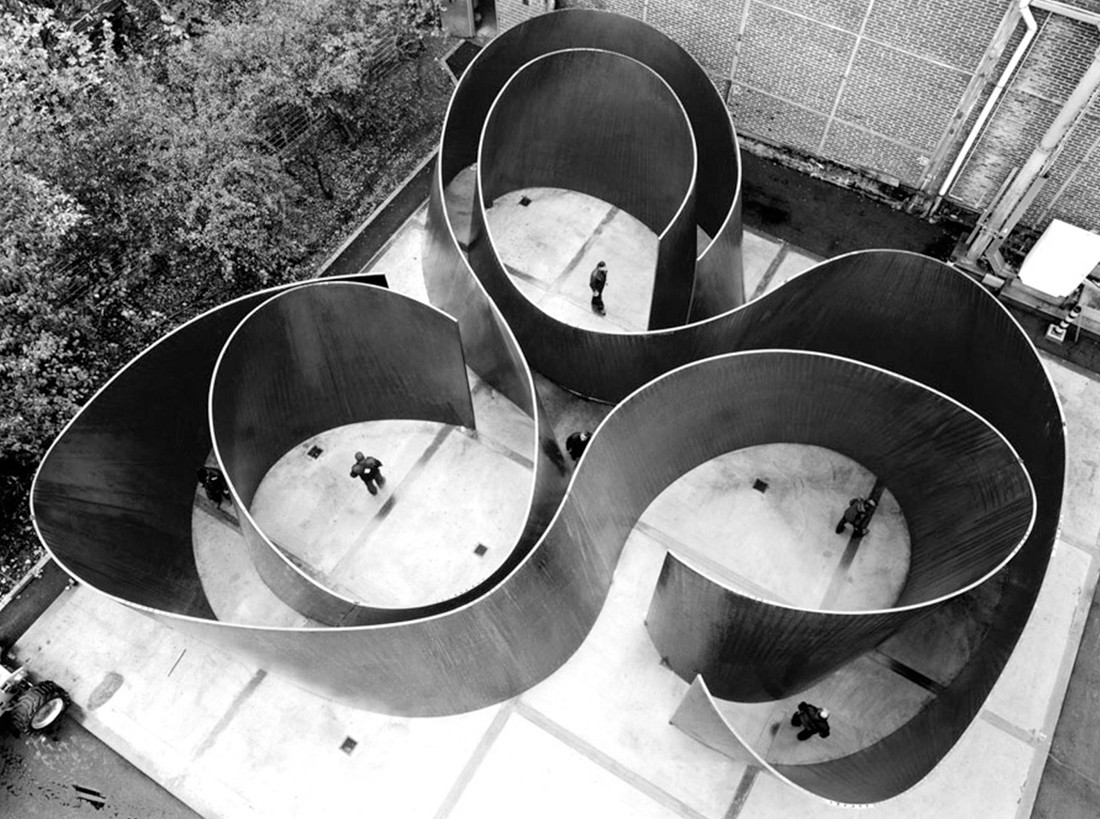
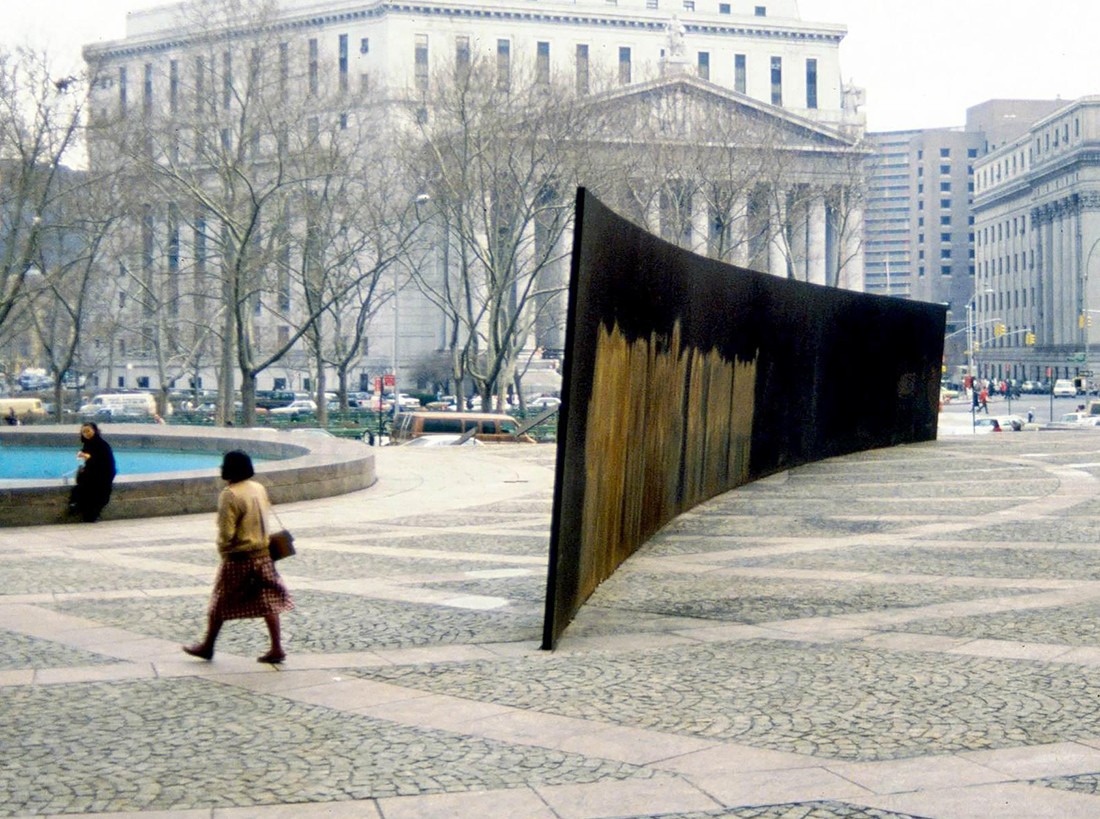
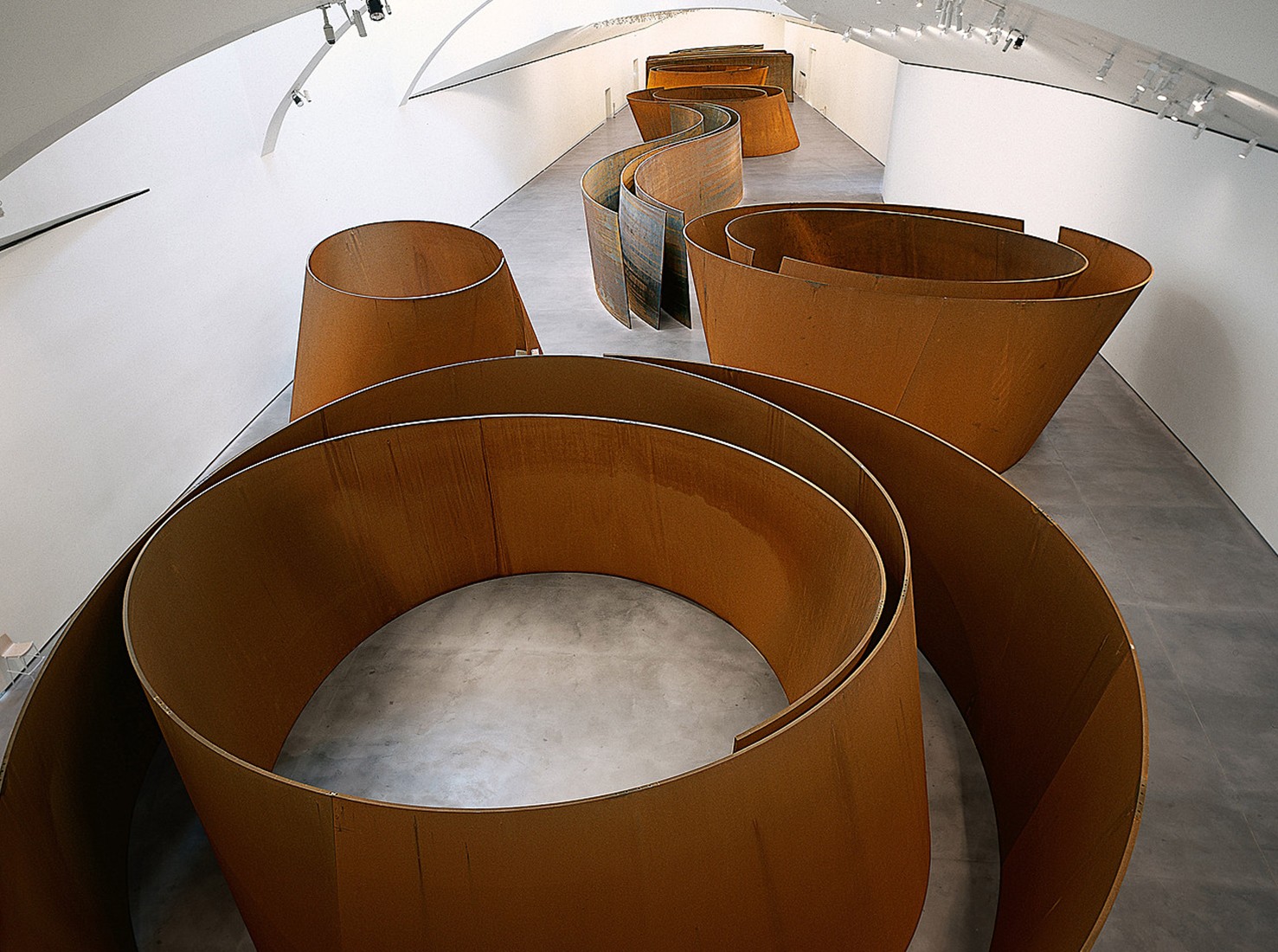
10 Marc Quinn
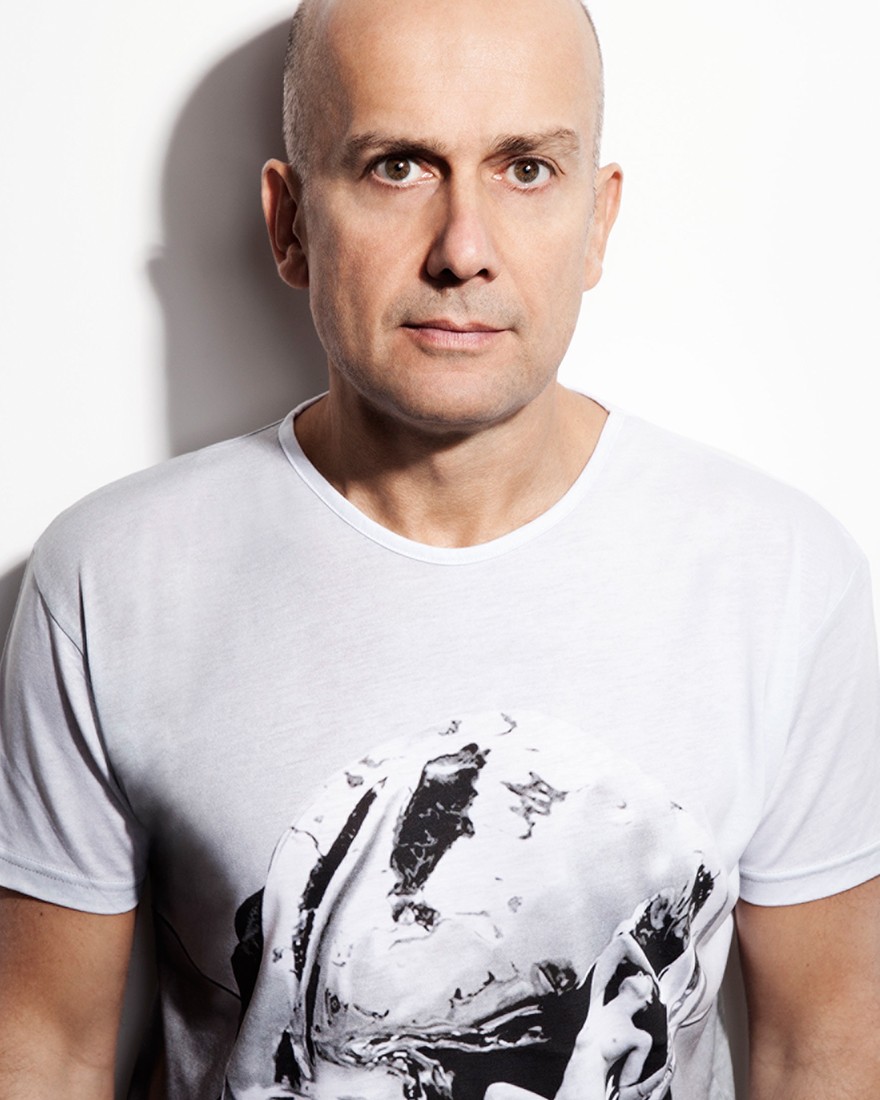
Marc Quinn (b. 1964) is an integral part of the story of Young British Artists, which began with the Saskatchewan exhibition Sensation in 1992, where Marc Quinn managed not to get lost in the background of Damien Hirst, Tracy Emin, and other provocateurs. His slogan is no romance. His art is deliberately realistic, cold, calculated, technological, winning in the frame. He understands well when to devote his work to inclusiveness, and when to the problems of migration. He’s cynical, and he’s shocking.
In 2000, the artist presented the installation Garden – 1000 plants and flowers from all over the world were immersed in 25 tons of silicone: shown in its prime and mummified alive as exhibits of the kunstkammer. One of the sculptor’s visiting cards were images of people without limbs. Quinn masterpiece – a project for Trafalgar Square: on a pedestal he placed a statue of armless and legless from the birth of the artist Alison Lapper in the last stage of pregnancy.
About the artist, who raises “problems of life and death” we can say that he is interested in two disciplines – history and biology, human blood, and the human body. In August 2008, Quinn exhibited at the British Museum a work depicting Kate Moss called “The Seren”. The life-size sculpture was positioned as “the largest gold statue since ancient Egypt”. Later, in 2014, the artist installed another statue of Kate Moss, but in another position, in Singapore.
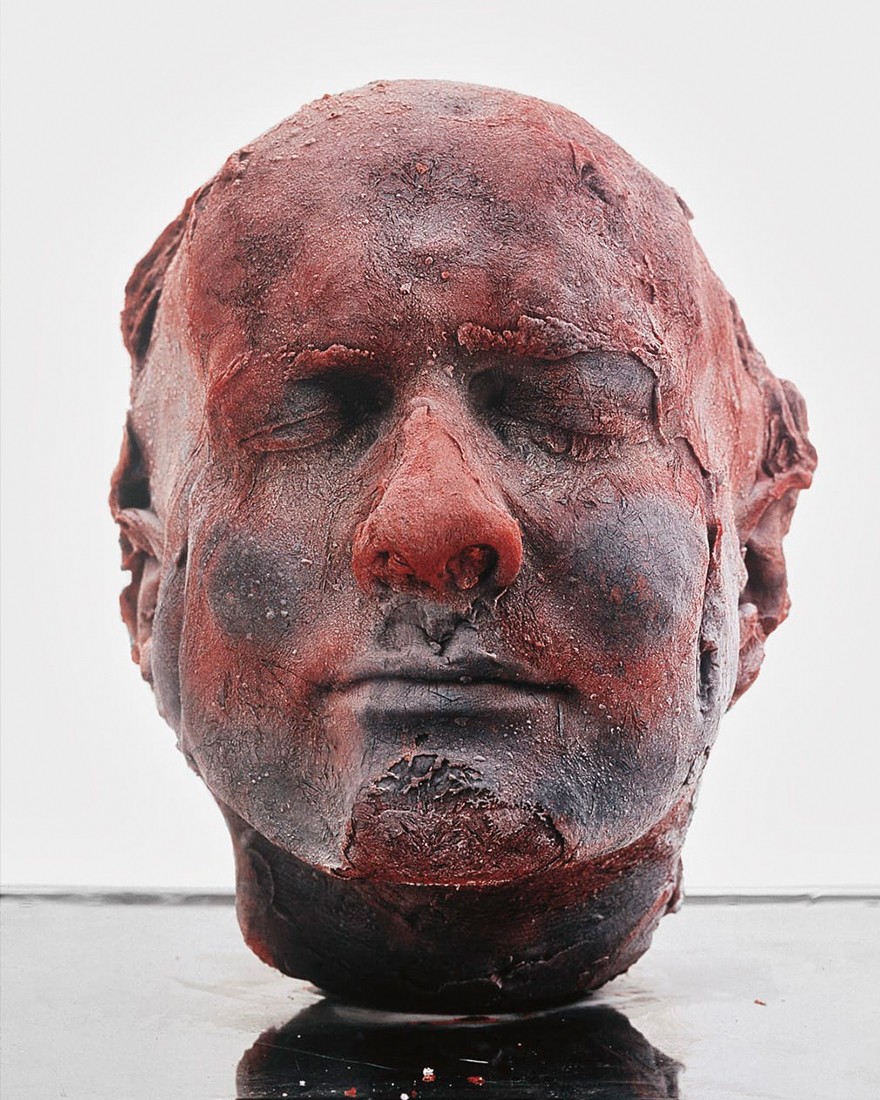
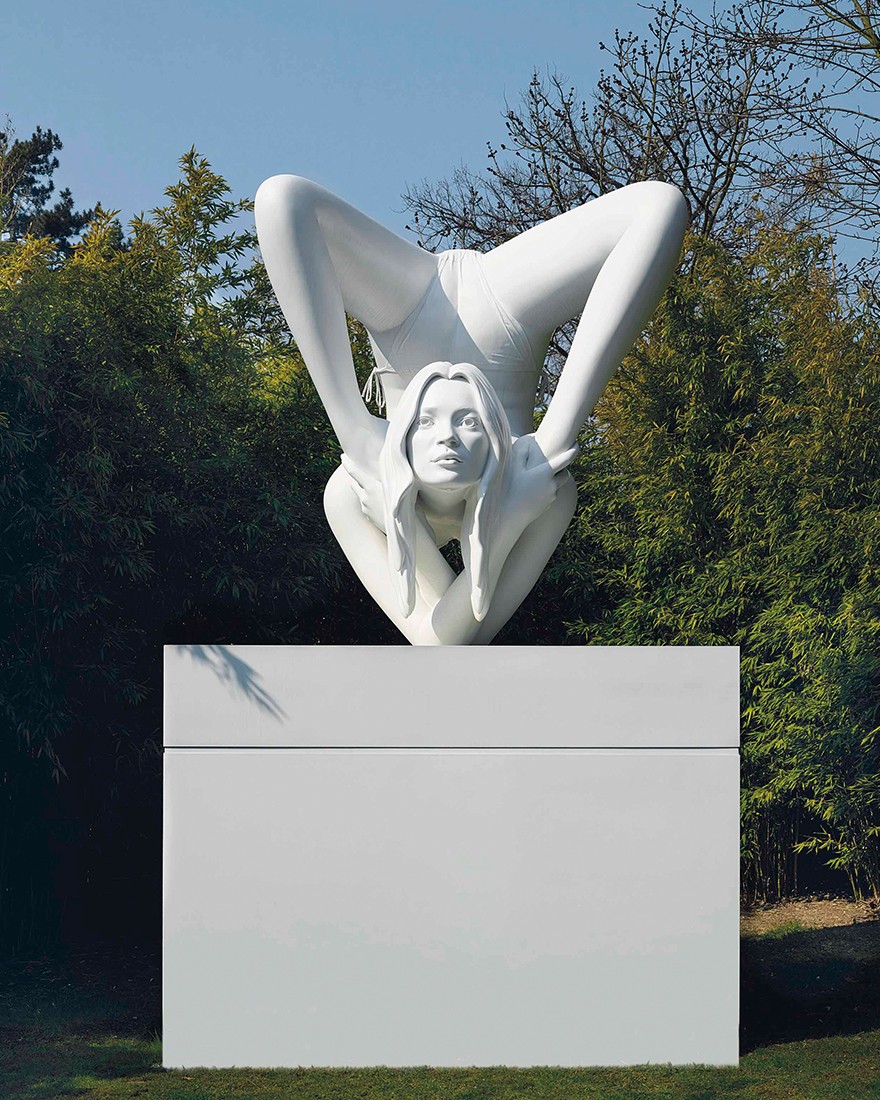
11 Jaume Plensa
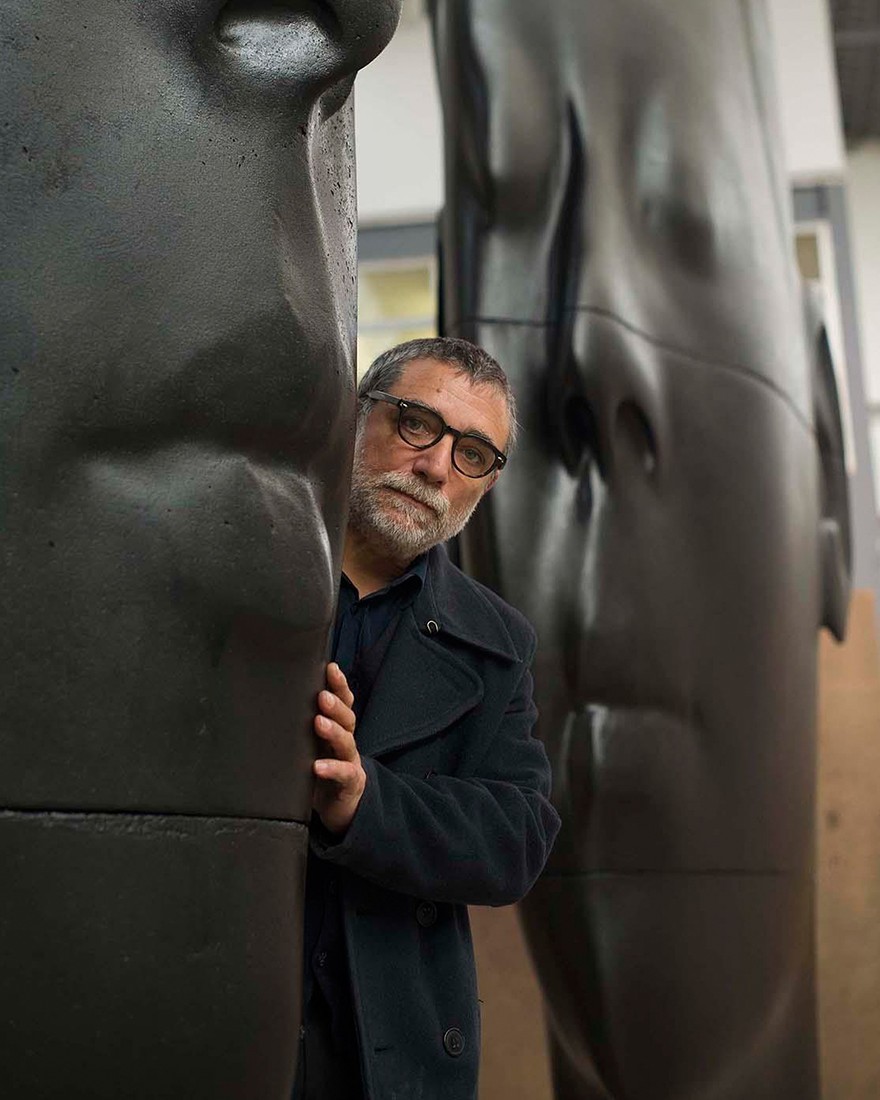
“Sculptures are the best way to ask a question,” says Jaume Plensa (b. 1955). The Catalan sculptor, known for his huge figures of letters, transparent mesh, and flattened heads, installed in parks and hotels around the world.
Plensa is an artist of feelings, reflections, and ideas. His artistic code is lightness, transparency in the use of heavy materials, existential motives, the study of the relationship between man and nature. In the USA, where Jaume spent more than 30 years, in 2004 in Millennium Park he presented one of his most grandiose projects – an interactive “Crown Fountain” – a video installation placed on huge screens-facades, from which water jets splash out.
Often the artist depicts himself in his sculptures. One of the most famous works – “The Heart of Trees” (2007), in which the viewer faces the sculptor. “Sculpture is something epic. This confrontation is the beauty of this art. I start working with photography, then the image turns to stone, stone to bronze. I work with materials, they gradually lose their smell, memory, but still, bring it to us”.

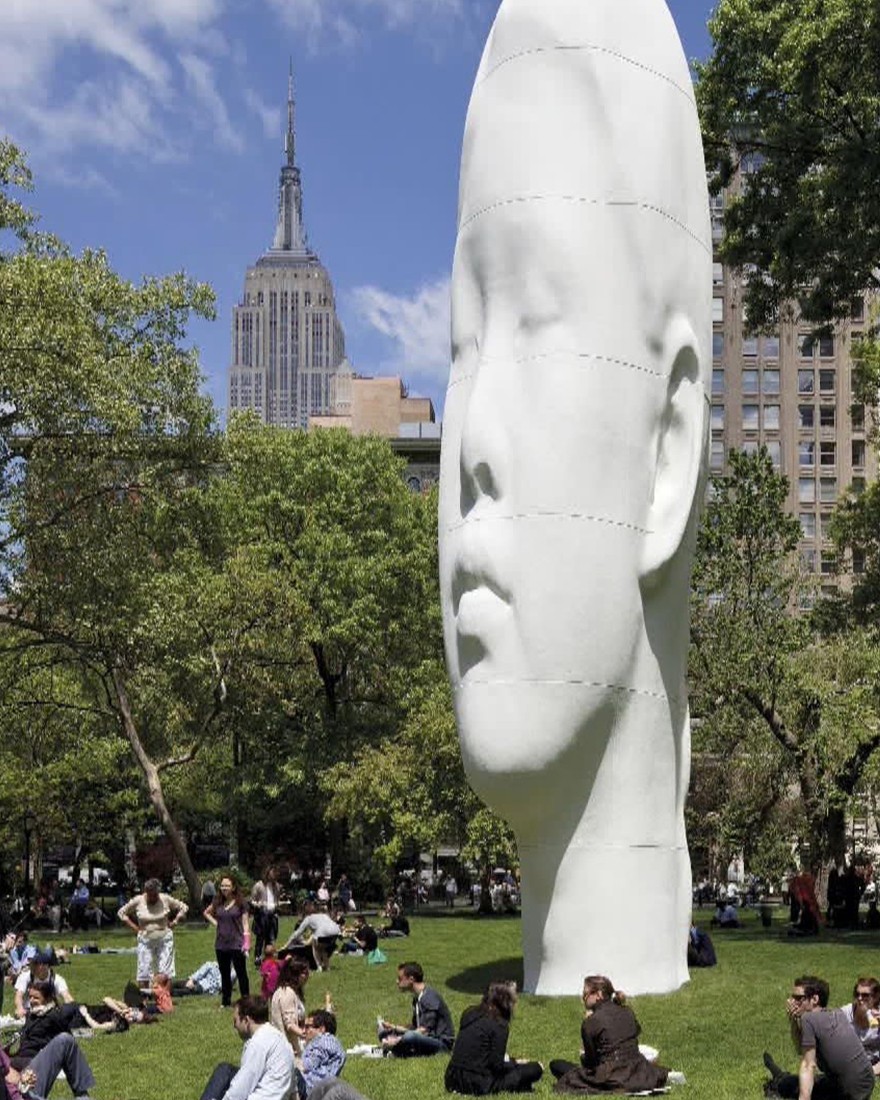
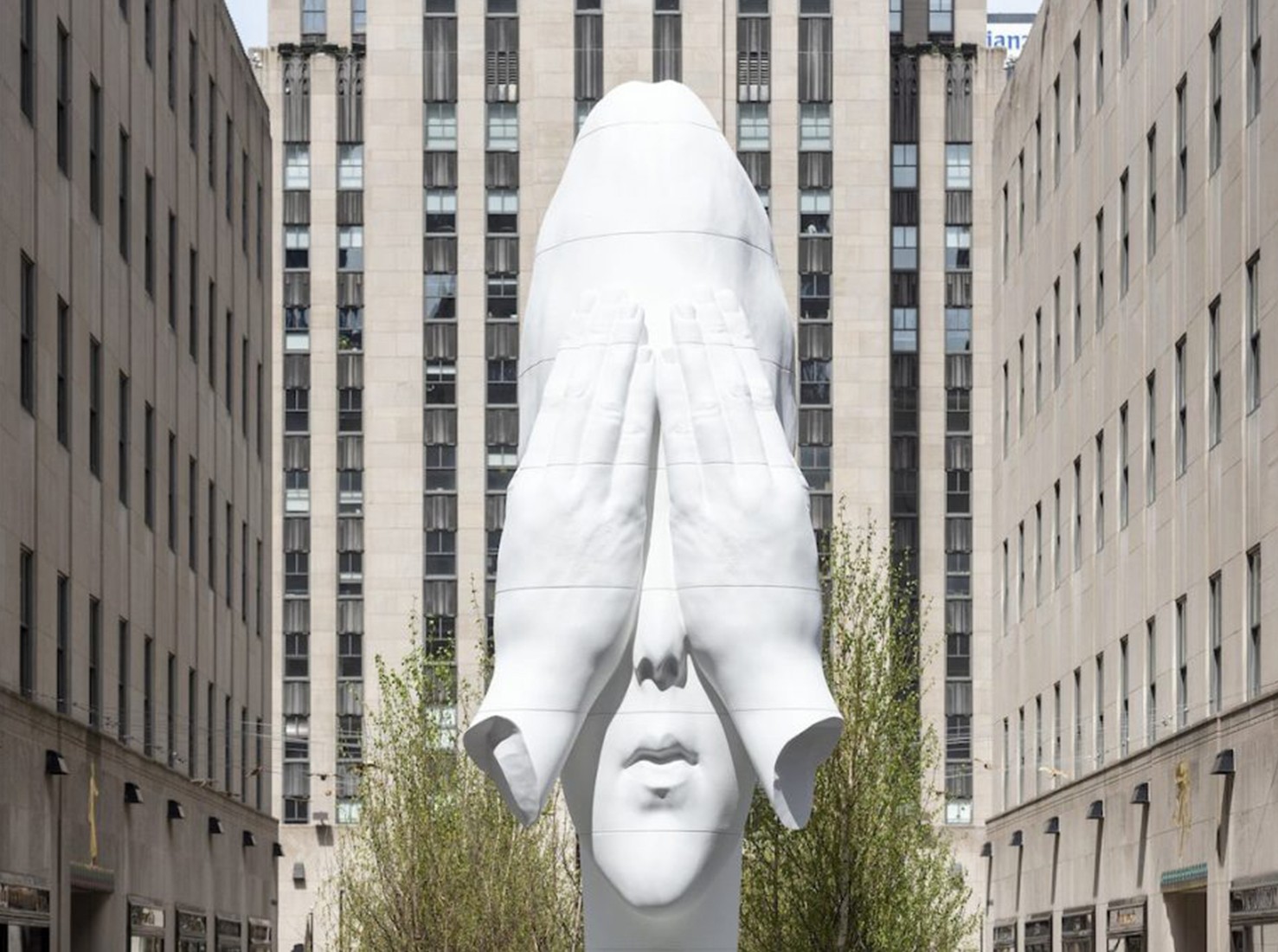

12 Tony Cragg

Dynamic sculptures by Tony Cragg (b. 1949) are loved by both collectors and decorators. Twirled spirals of wood, metal, abstract compositions of plastic and Kevlar are included in private collections from New York to Beirut. They are kept by leading art museums of the world, they stand on squares and streets of cities in Europe and America.
Rector of the Dusseldorf Academy of Arts British sculptor Tony Craig since 1977 lives and works in Germany. Here, beneath Wuppertal, there is a luxurious park of his sculptures. The start of the sculptor’s career coincided with the punk revolution of the 1970s, which turned unnecessary materials into fashion and shouts of protest into music. Cragg made a series of sculptures in which he experimented with cheap protest materials, worked with garbage, connected old tables, shelves, buffets with each other, and woven the resulting structures. Later he began to use more traditional and noble wood, bronze and marble.
Tony Cragg’s sculptures are often compared with works of primitive art, and it seems that their analogs can be found in archaeological museums or in textbooks of paleontology. As Cragg himself admits, one of the main ideas of creating such works of art is their absolute uselessness. It is an attempt to capture something intangible, rapidly slipping away and constantly changing.


